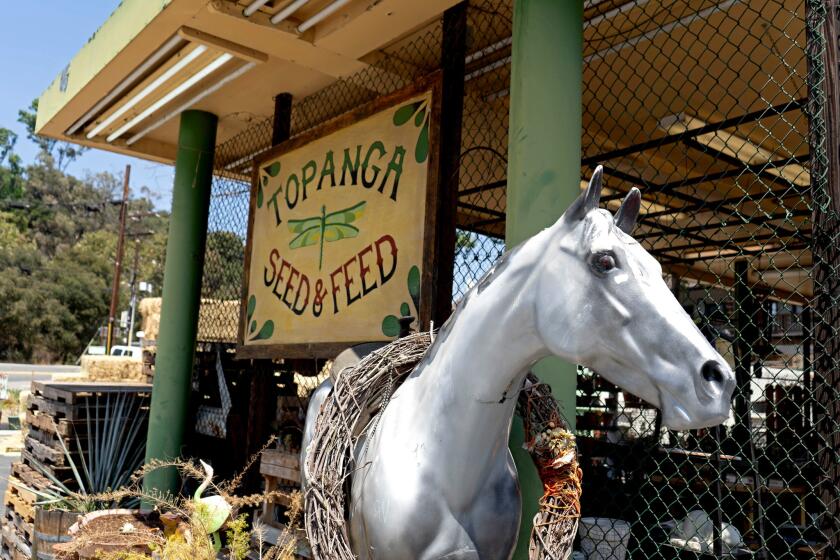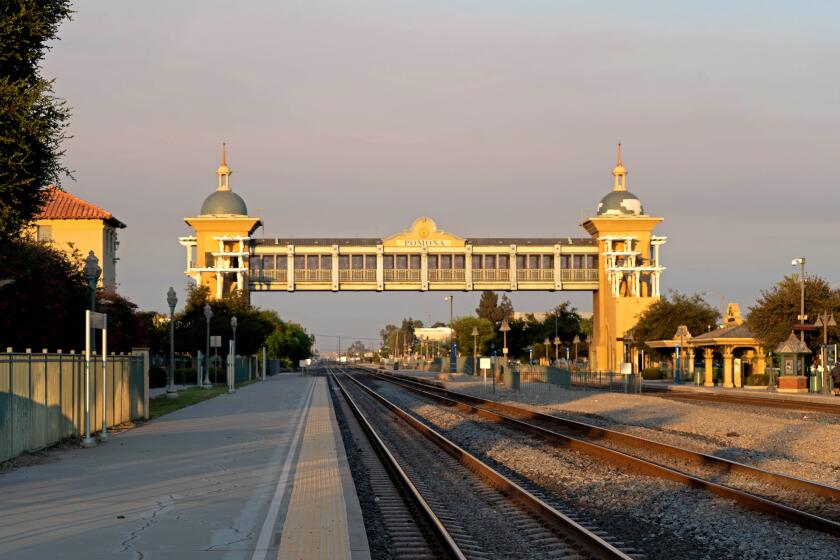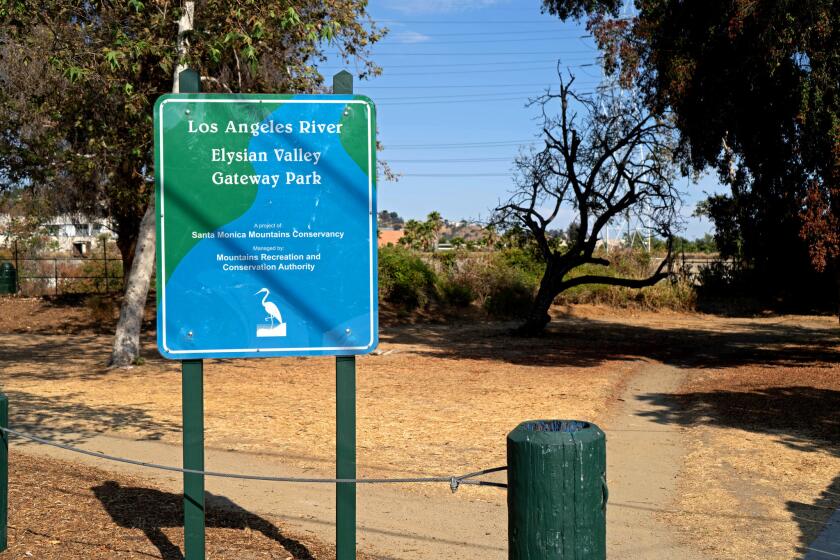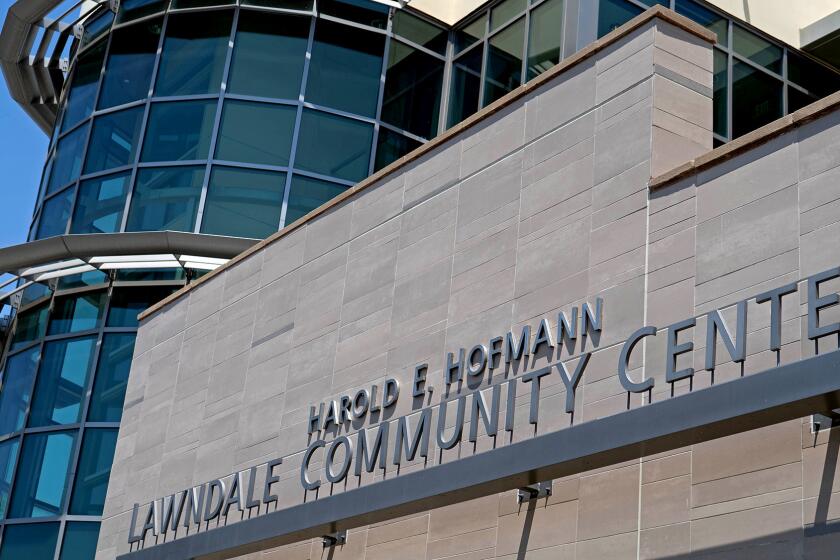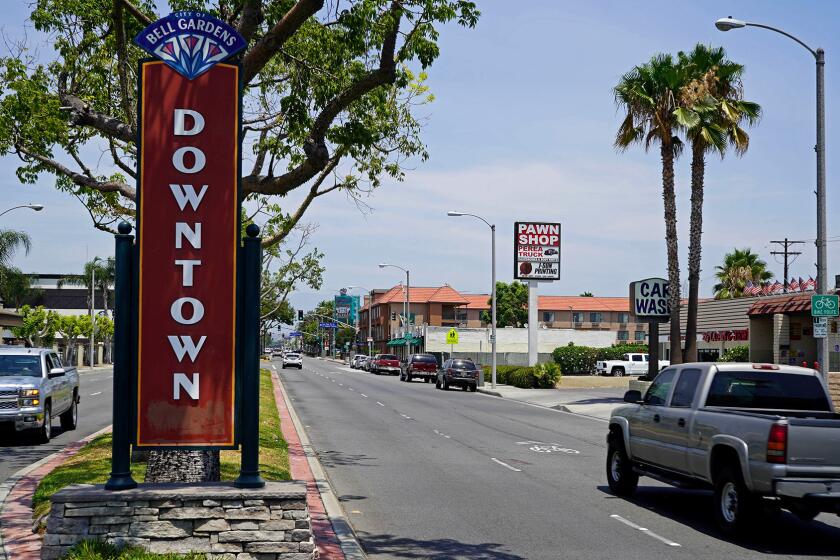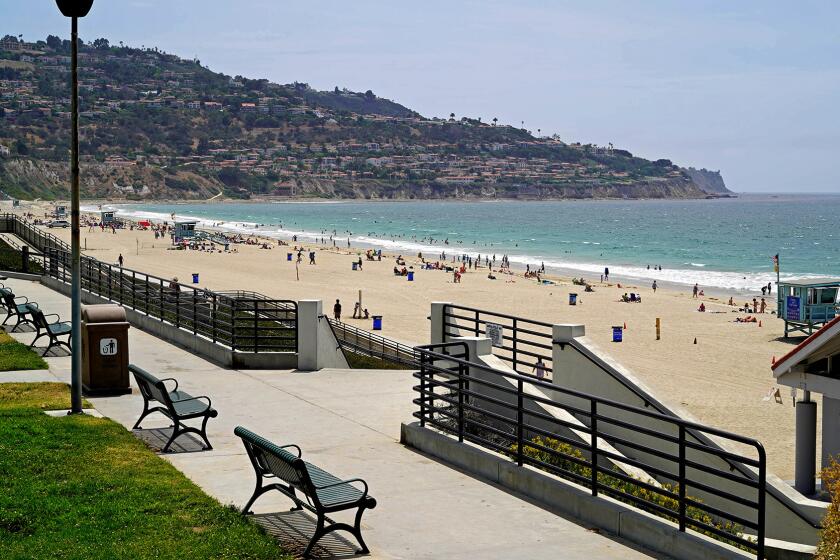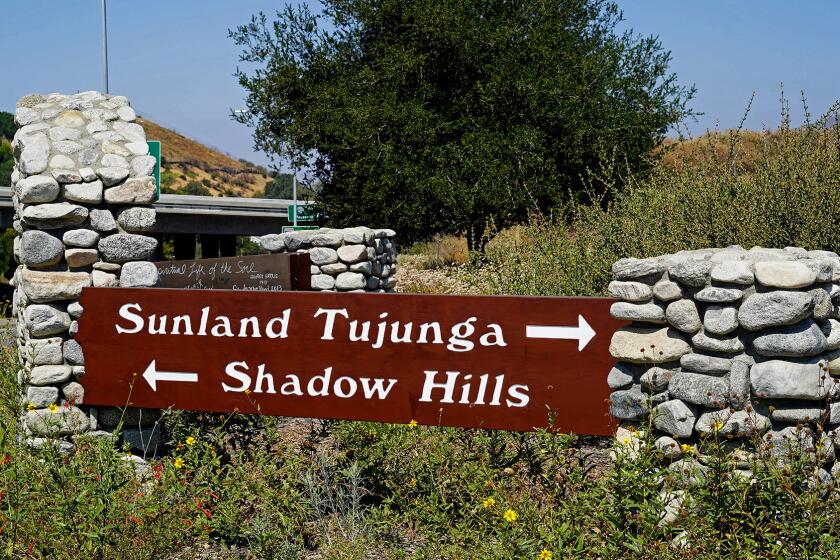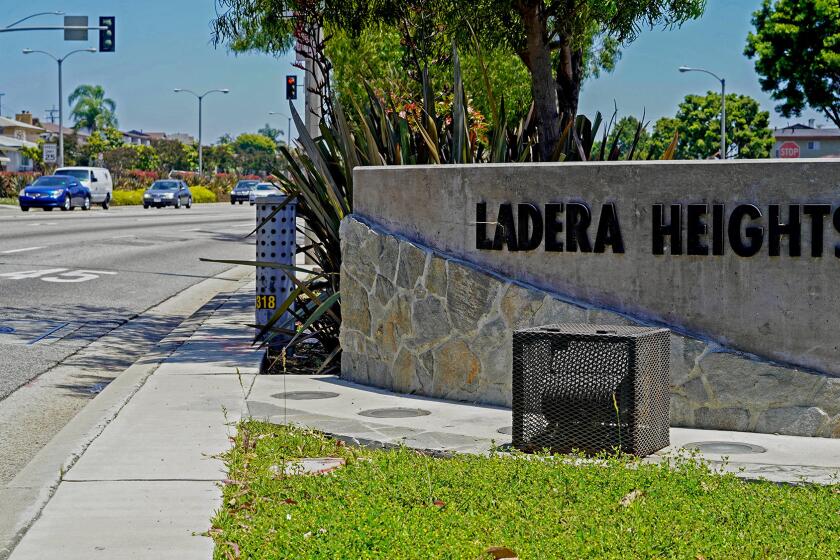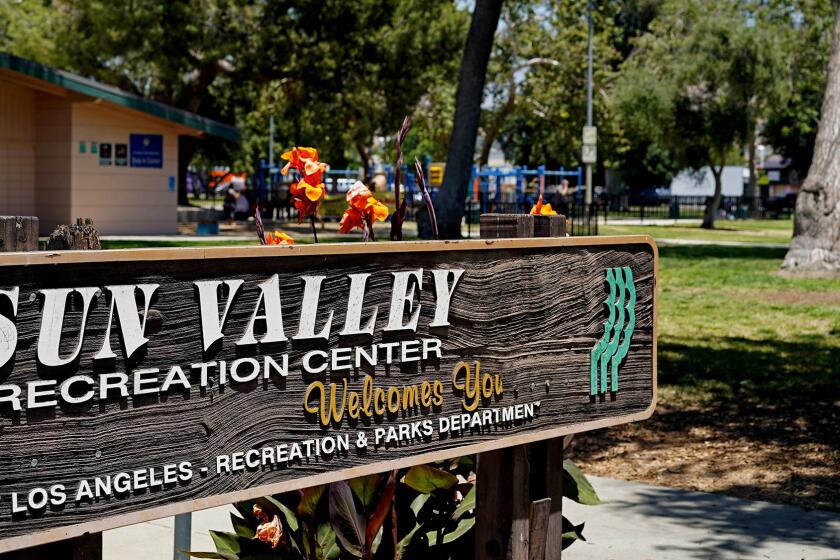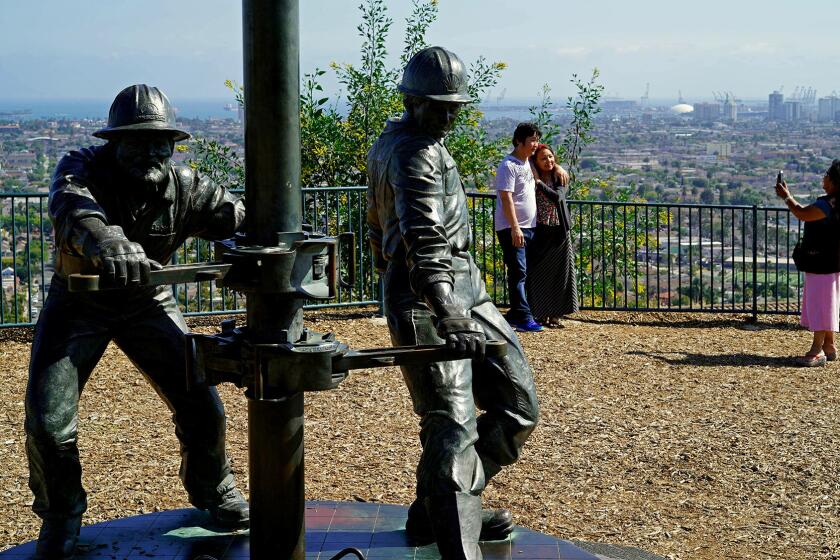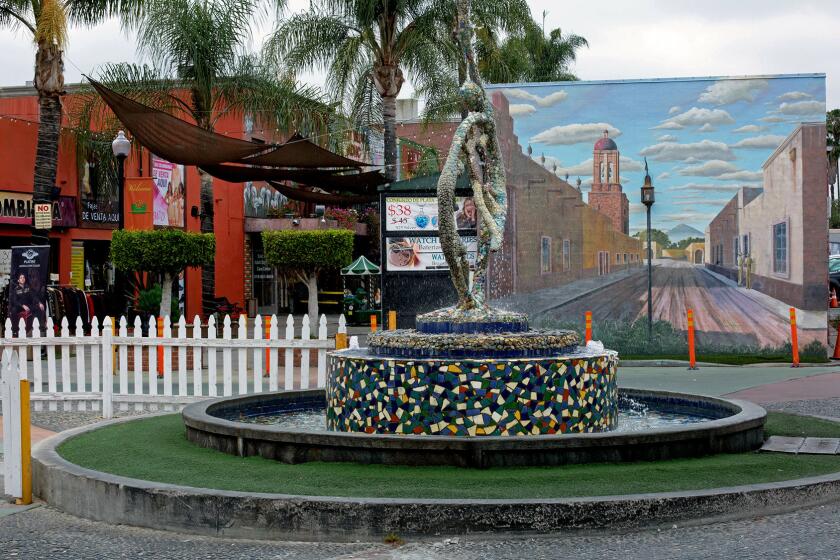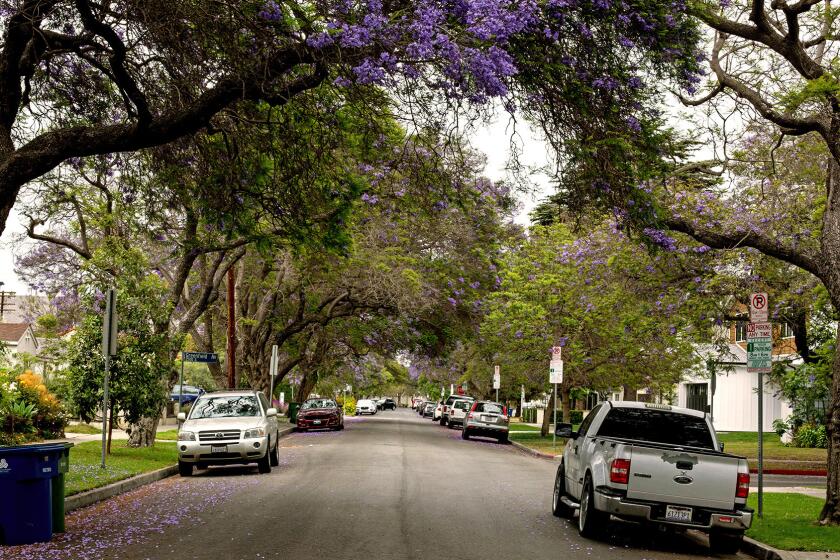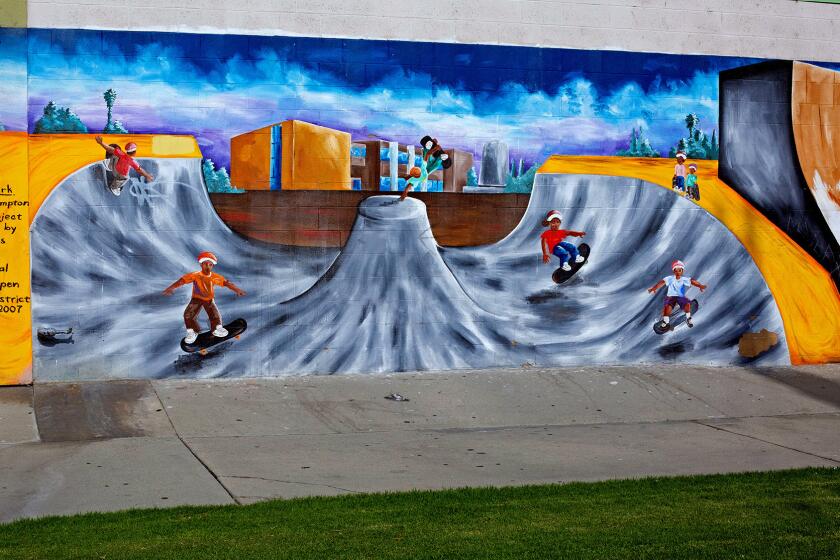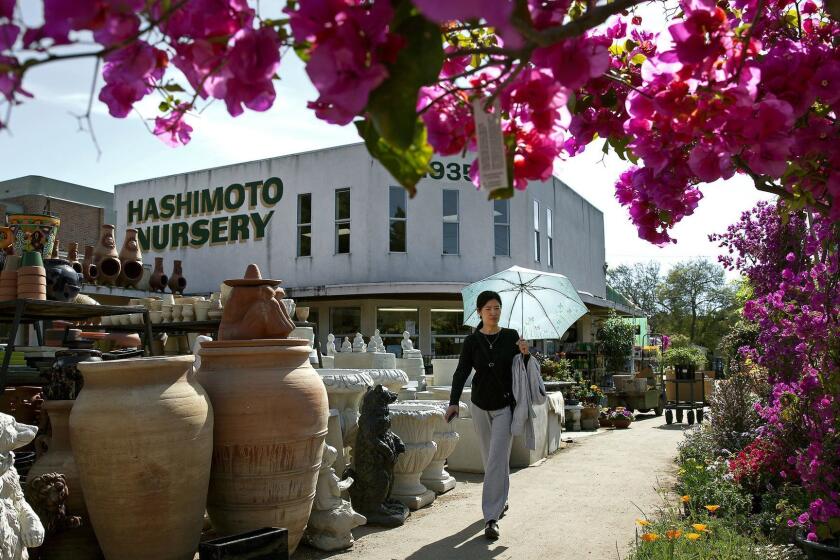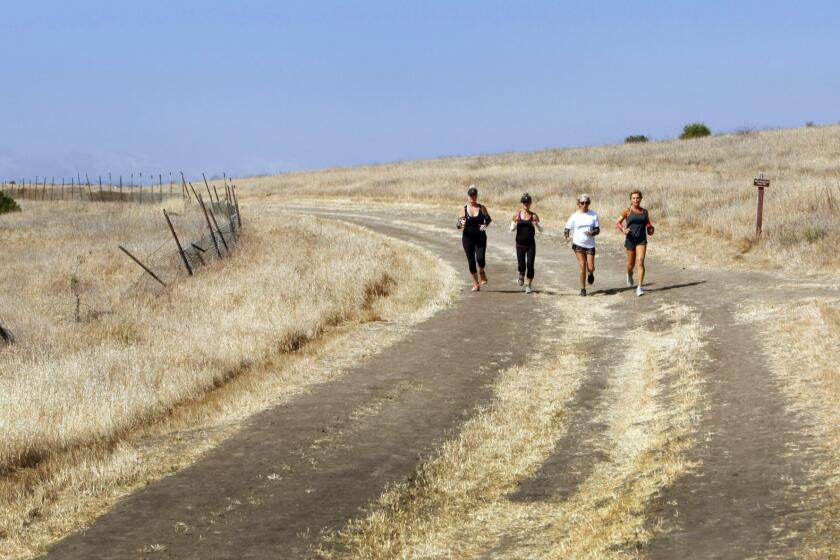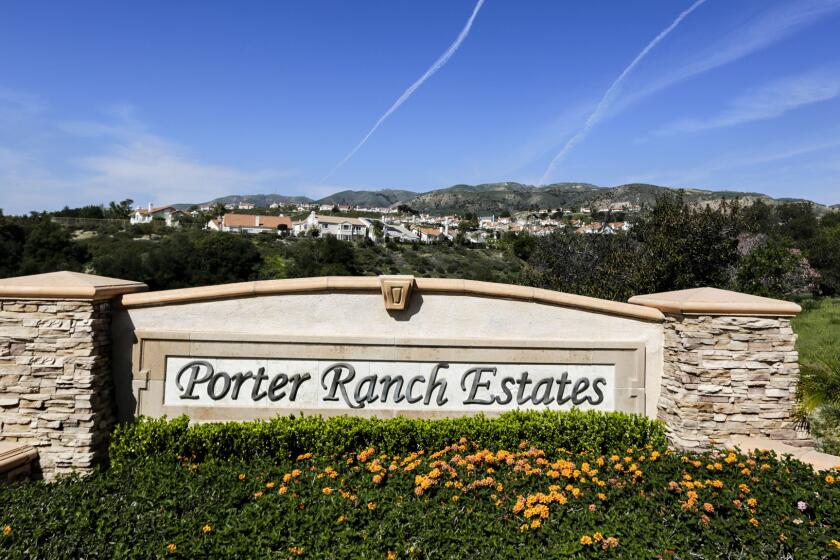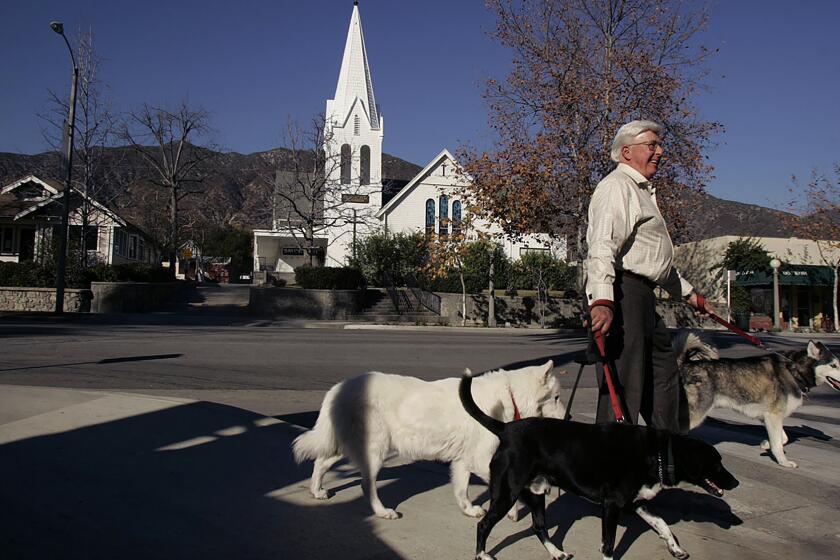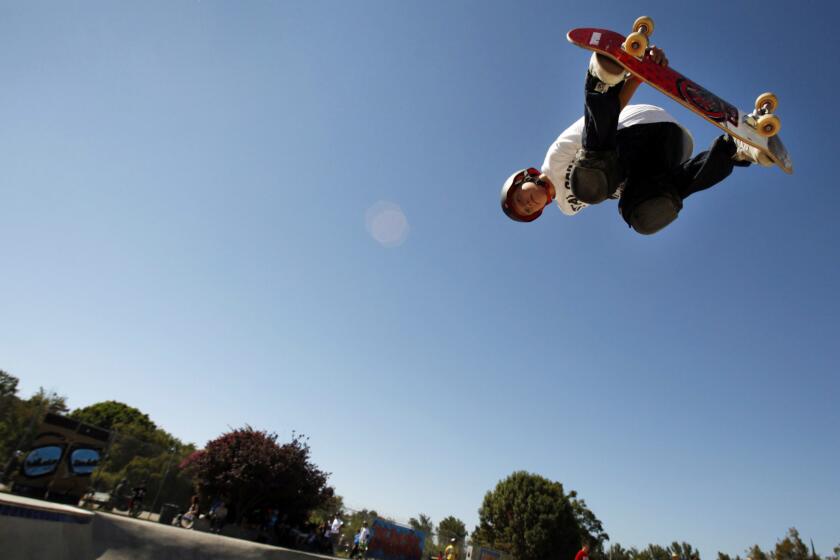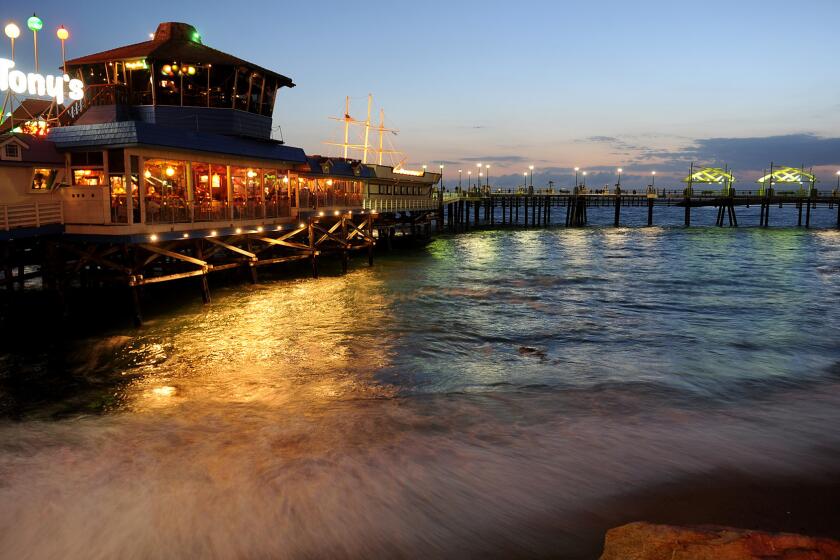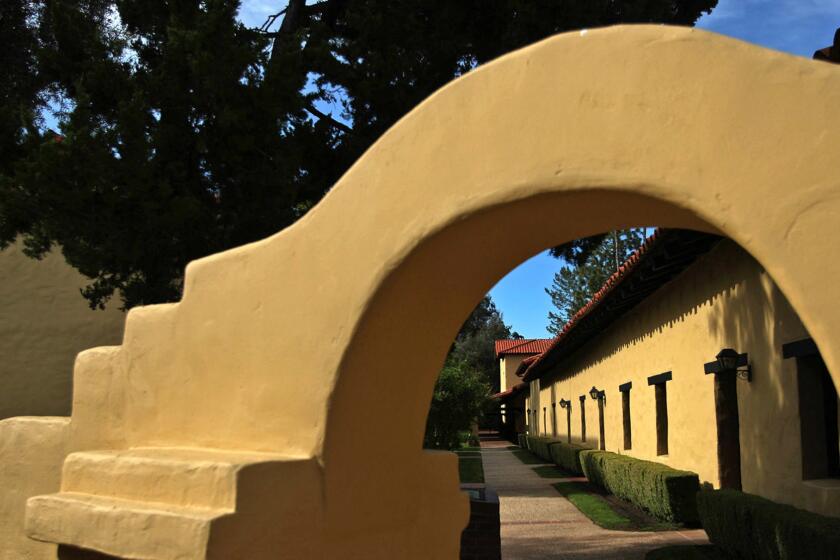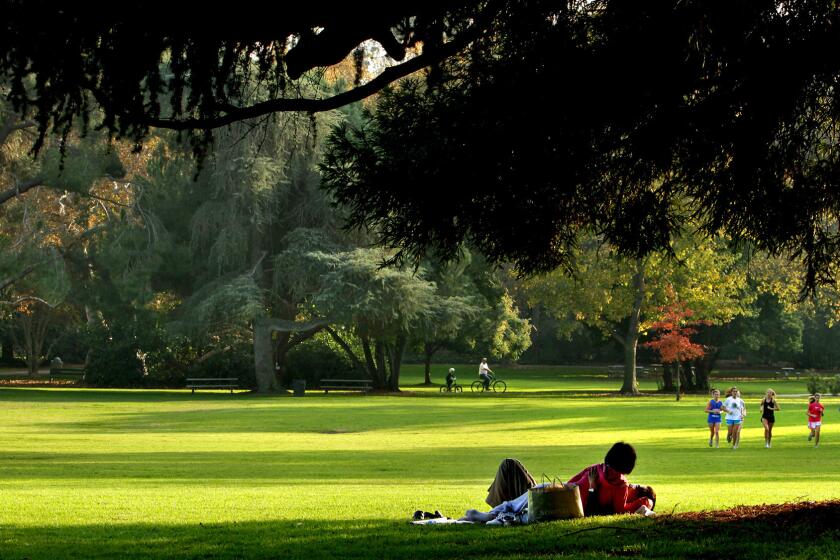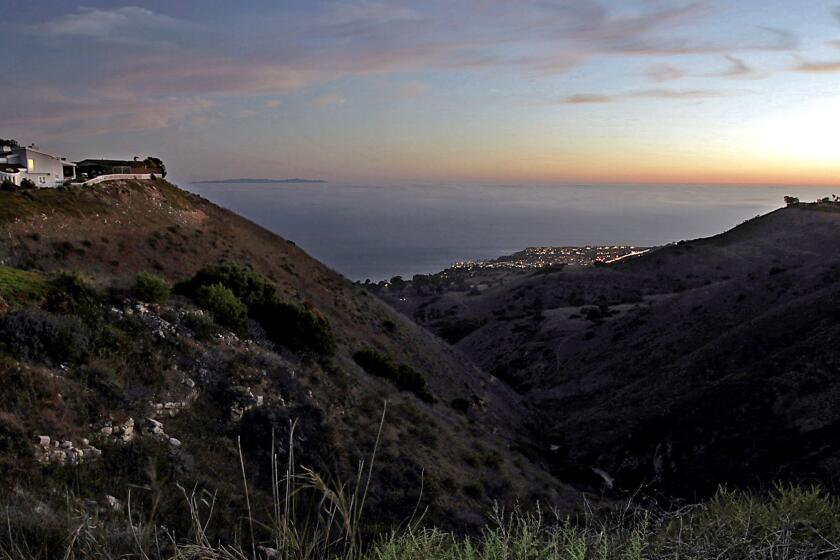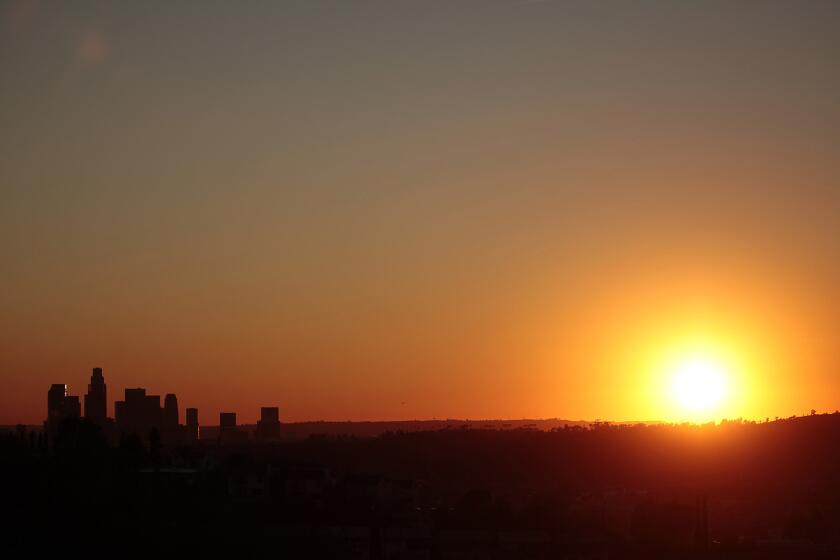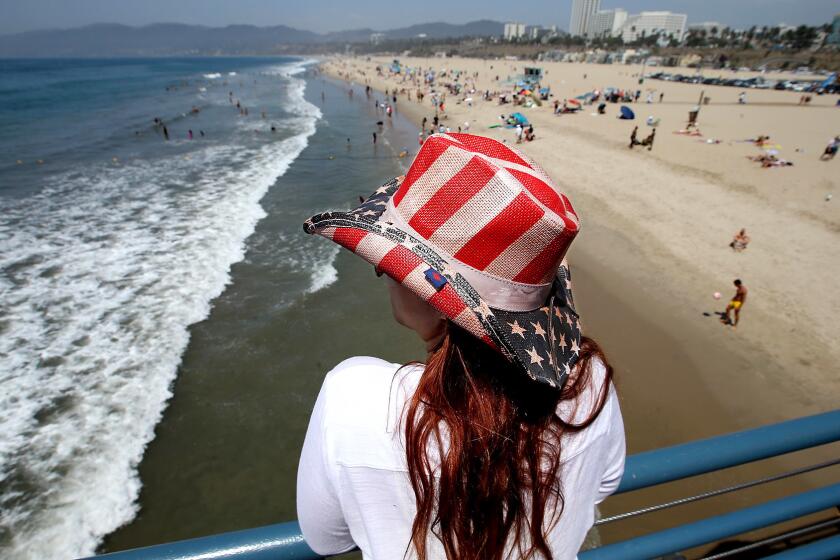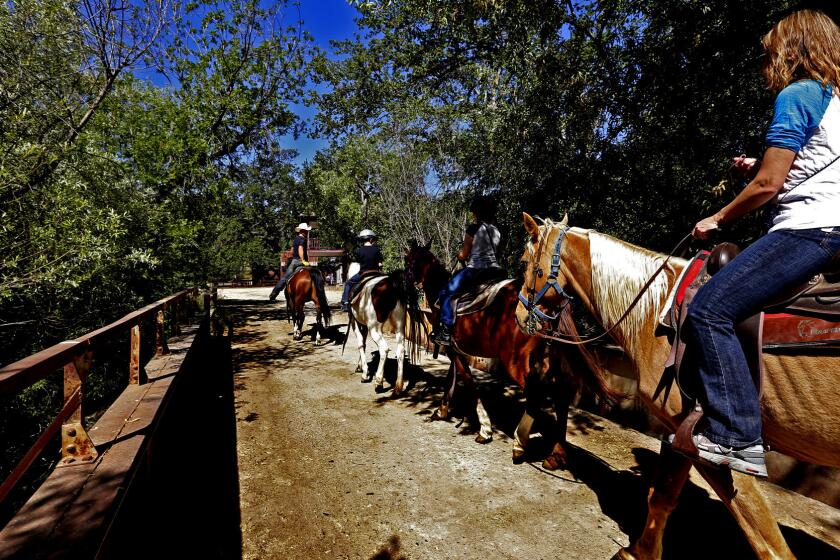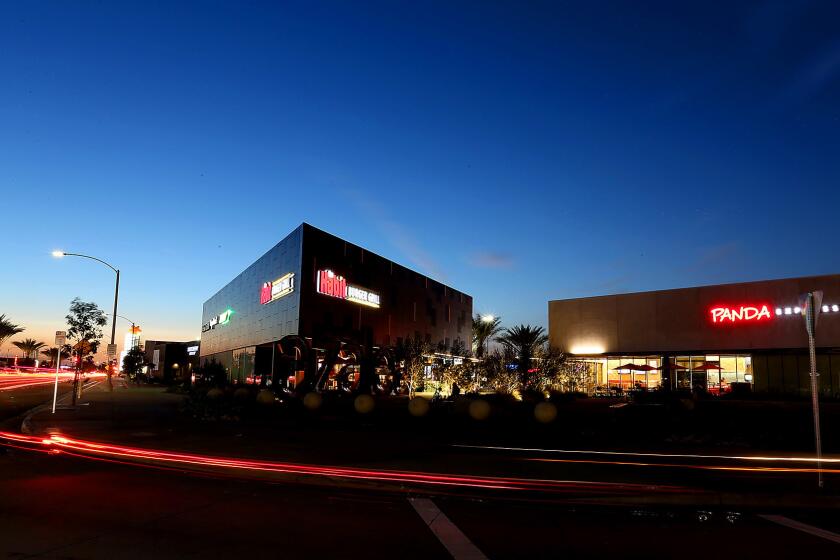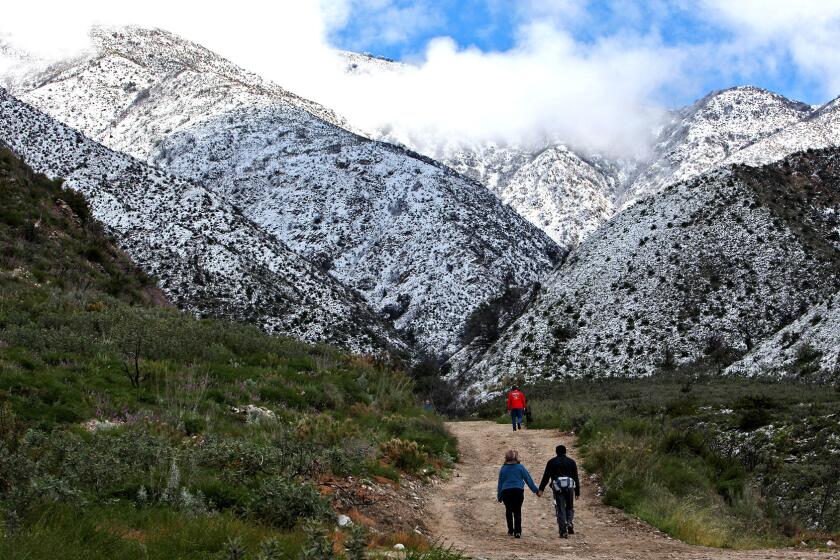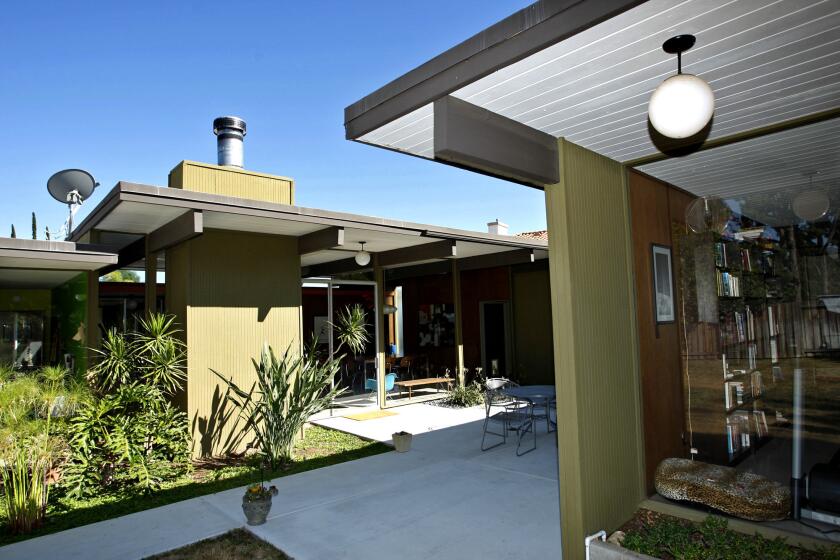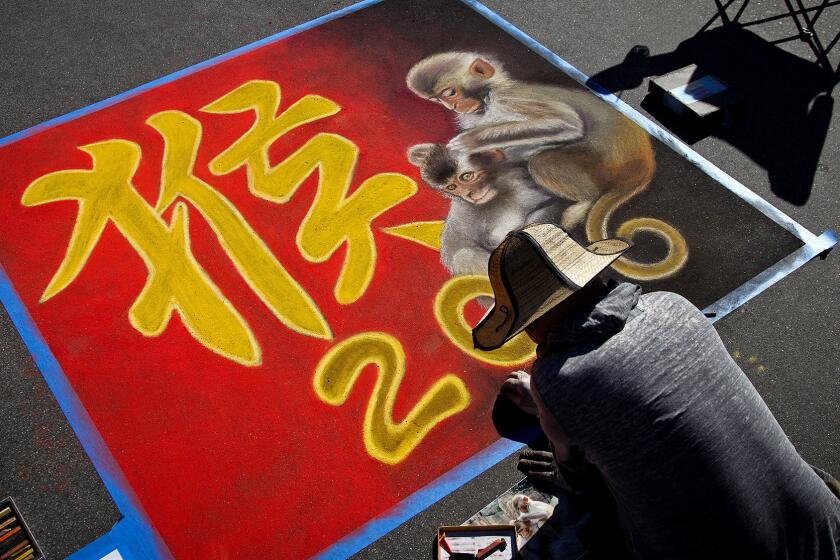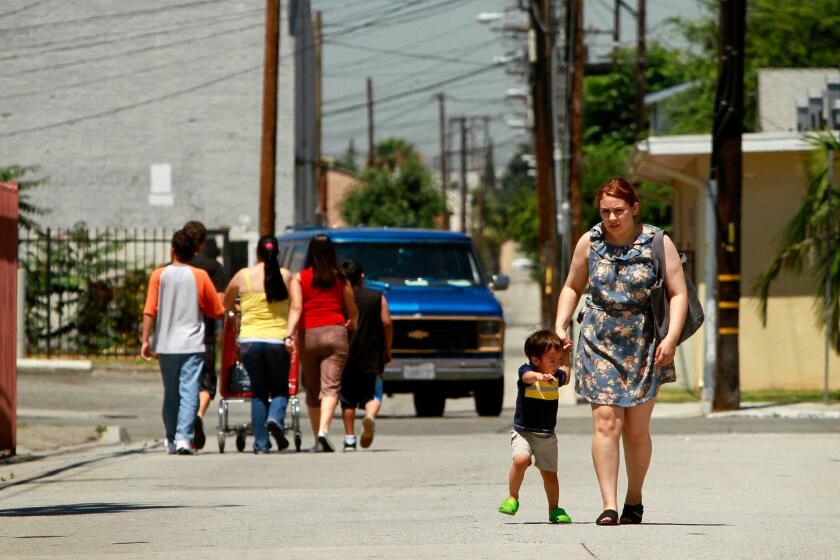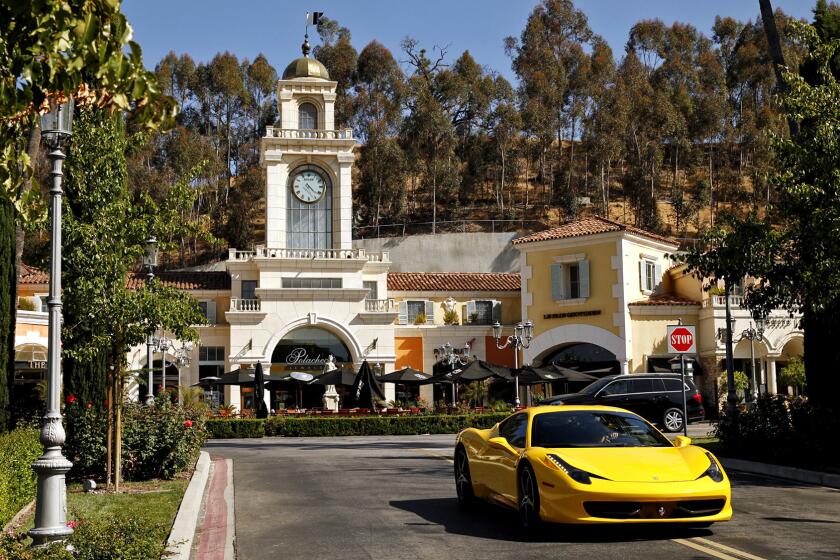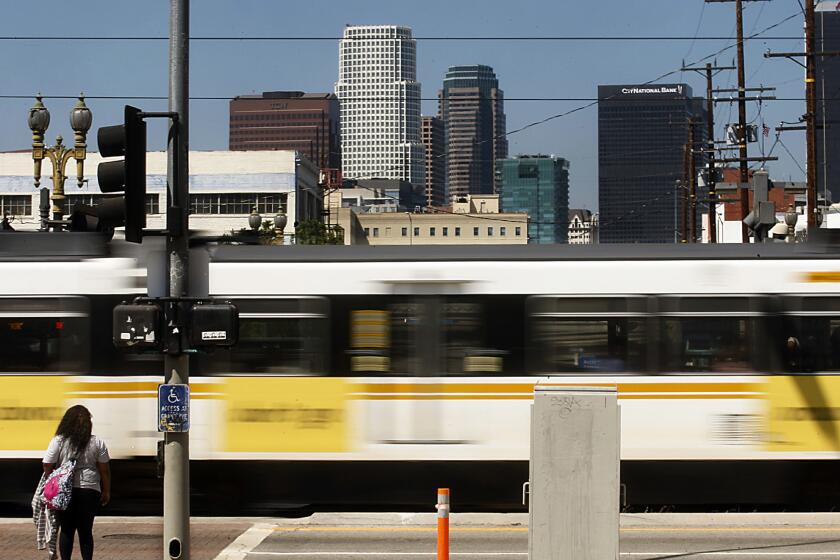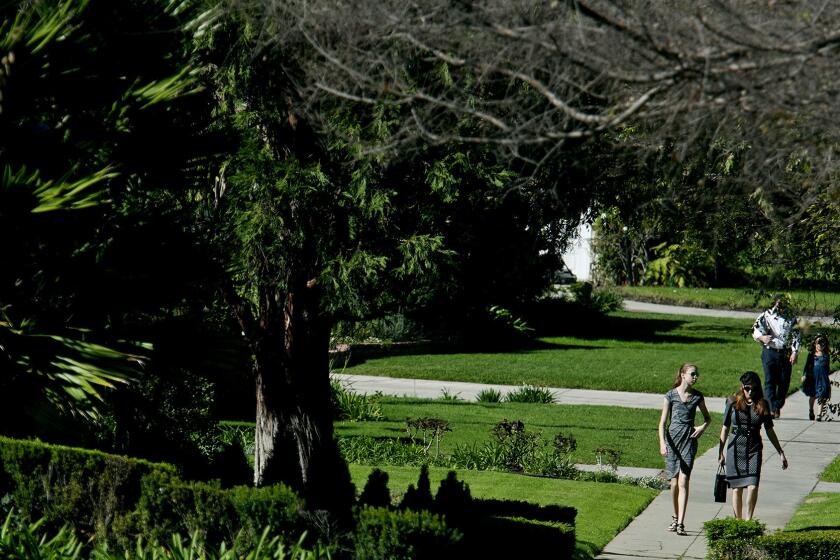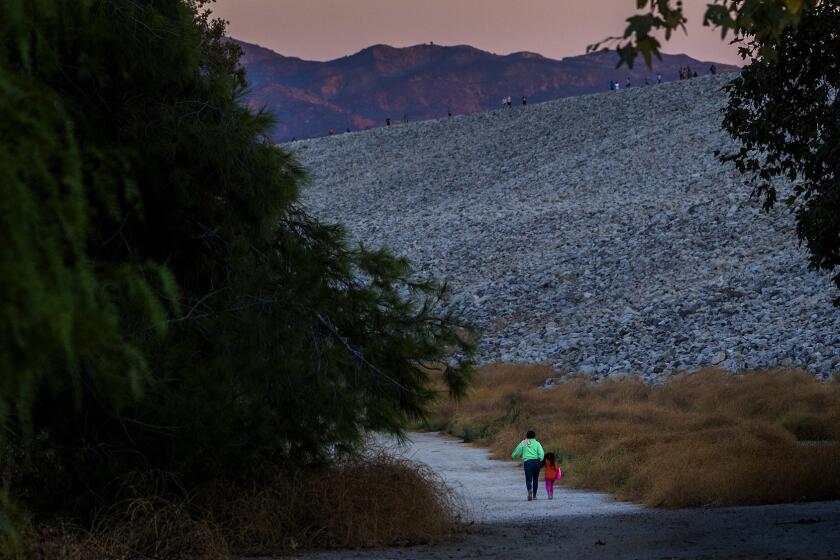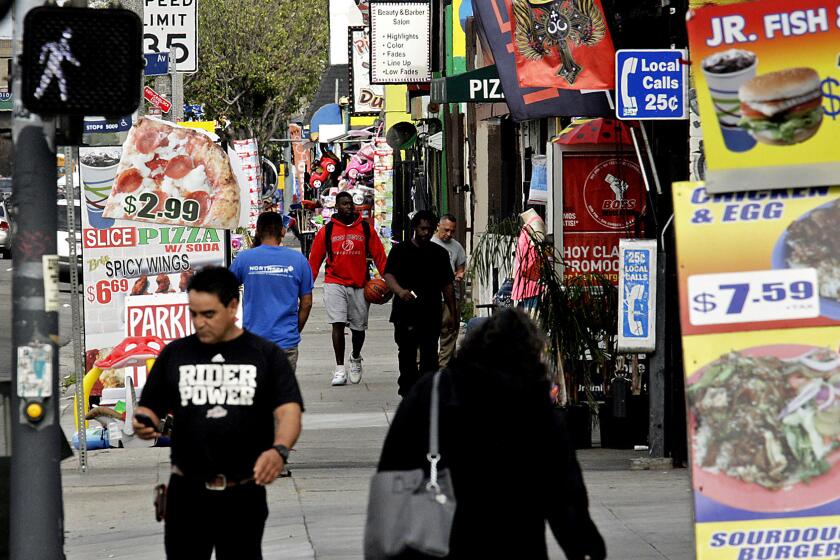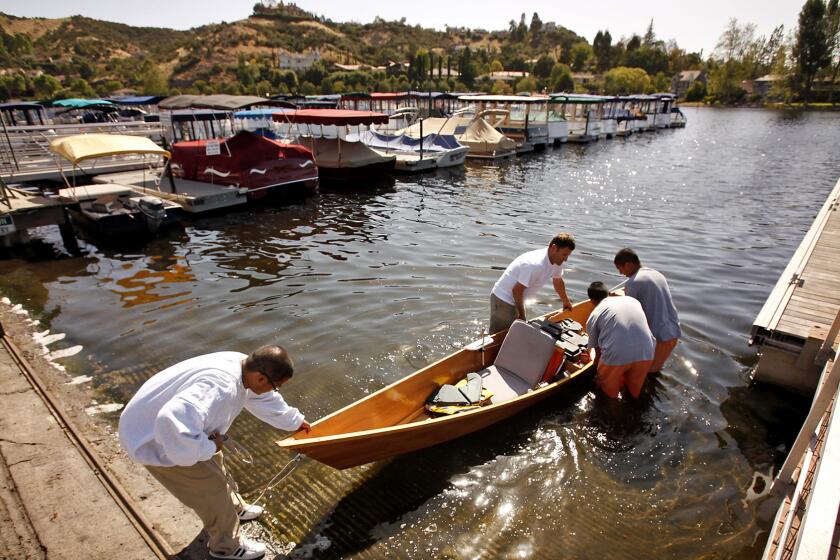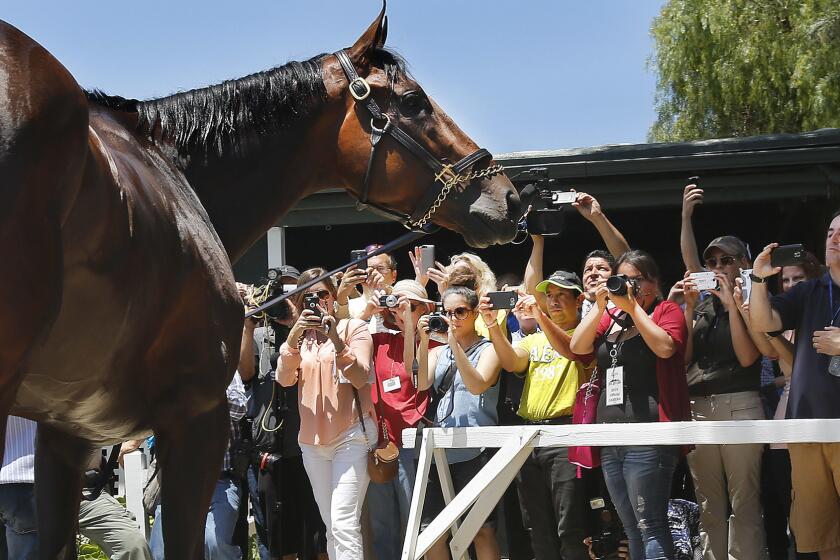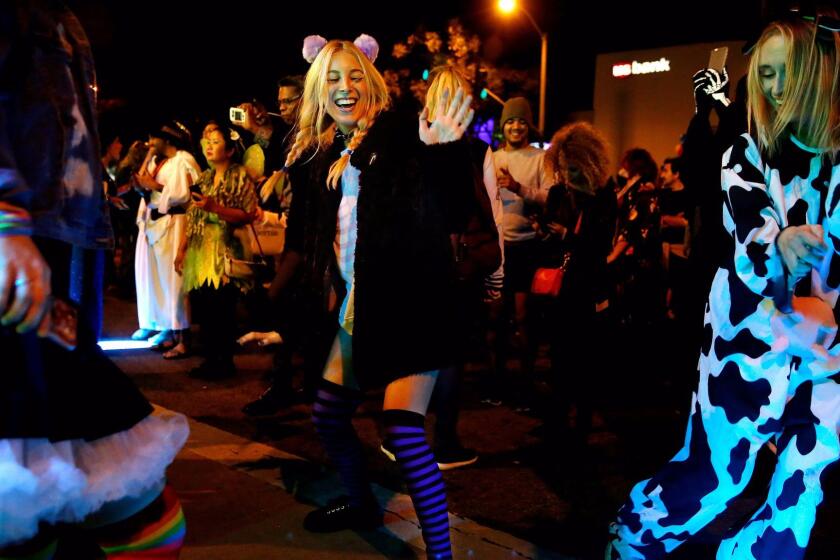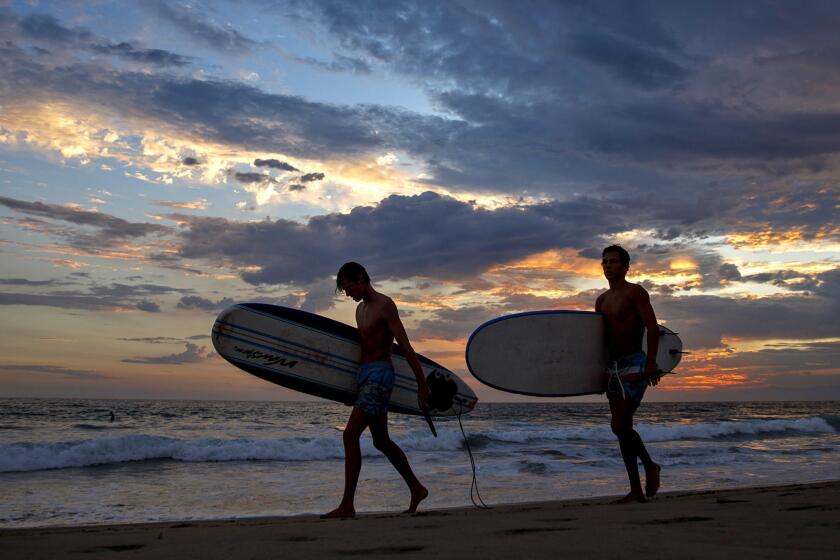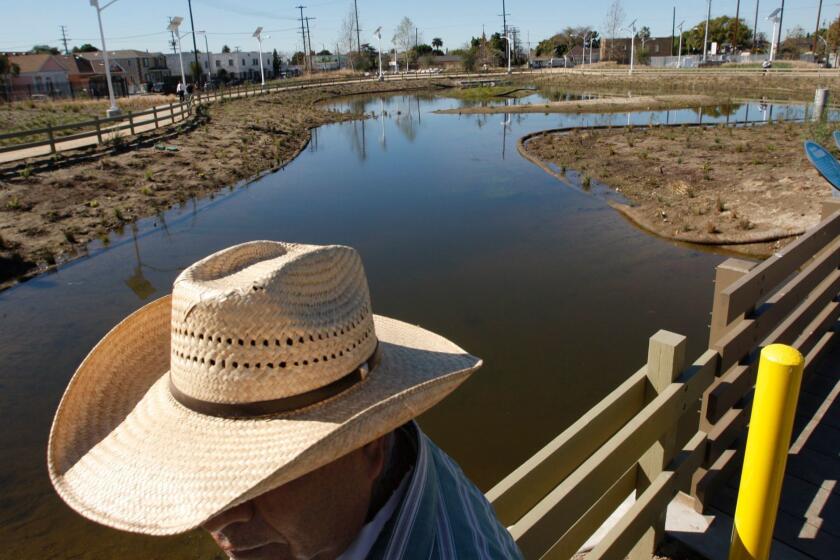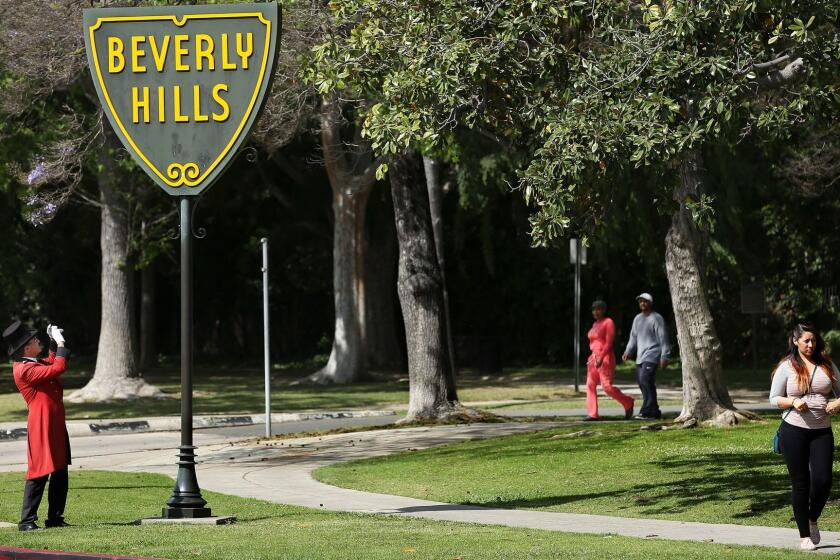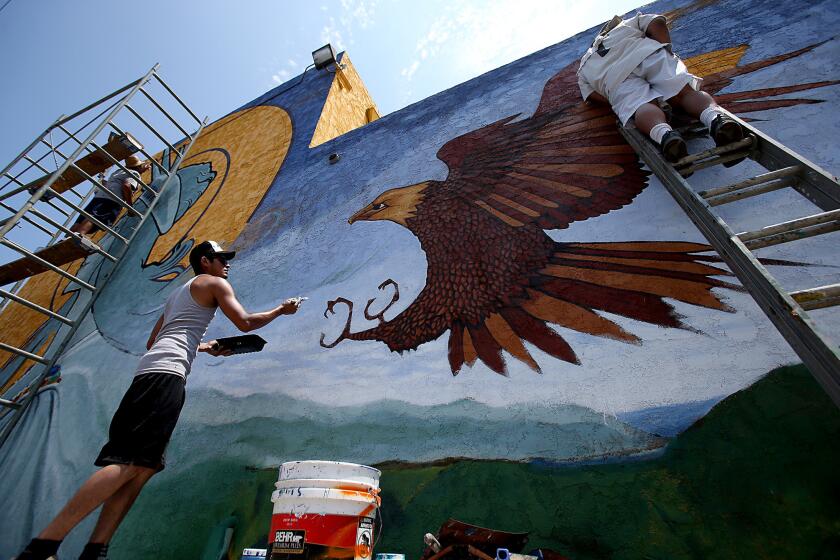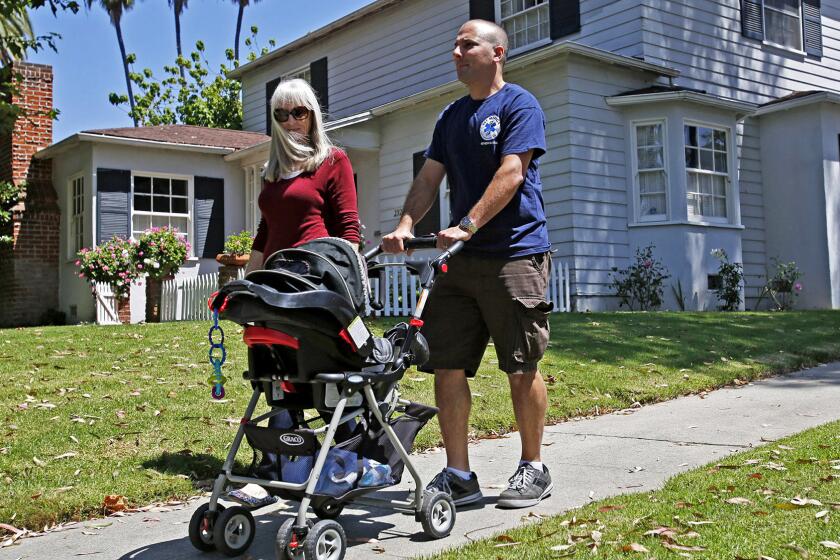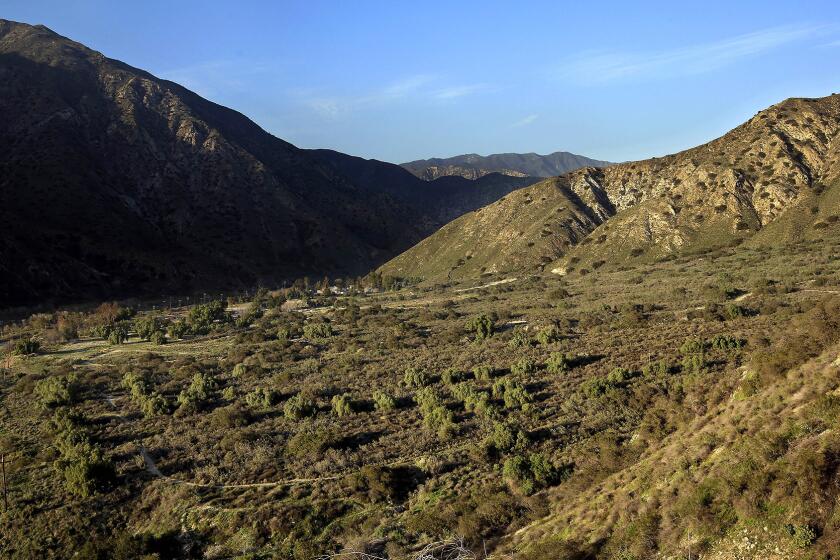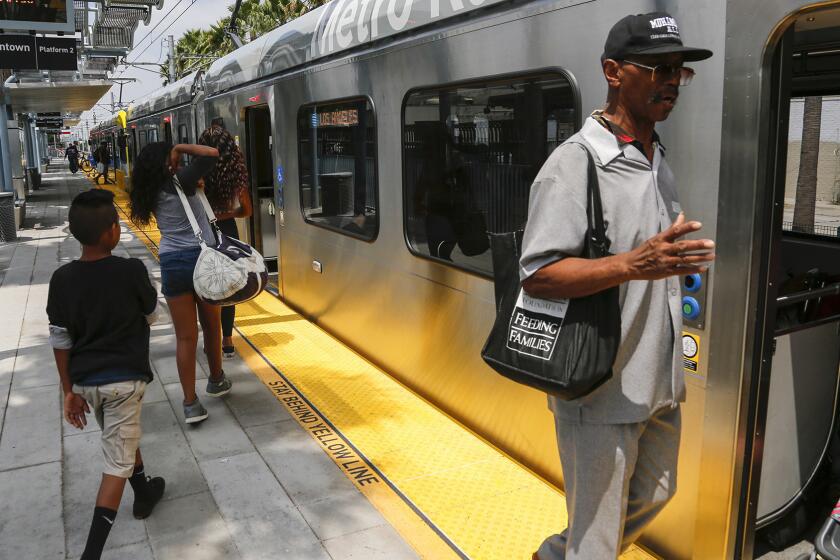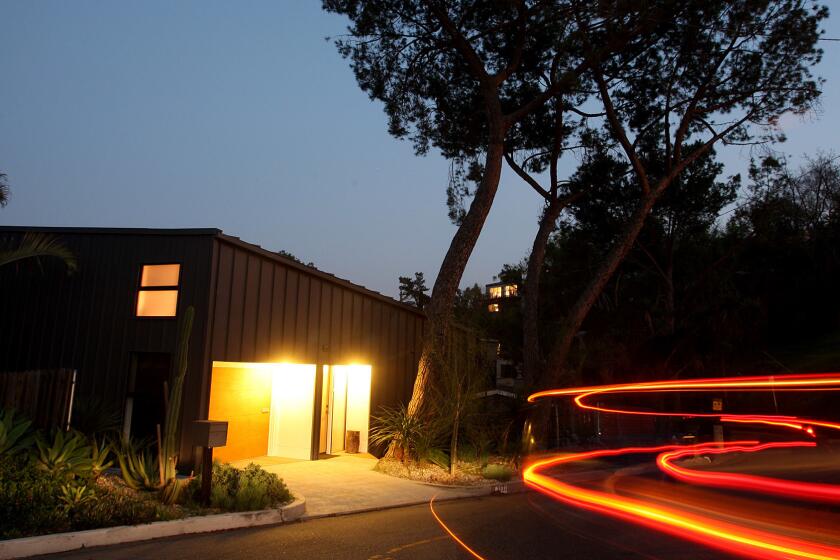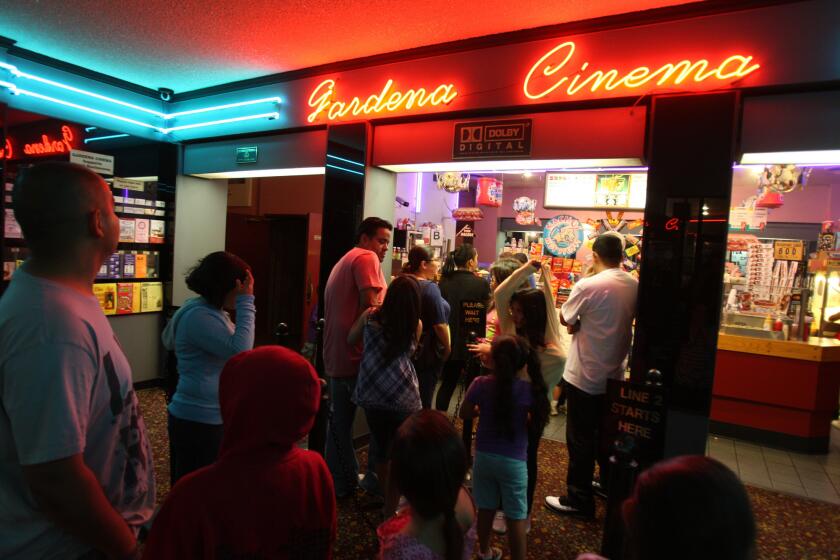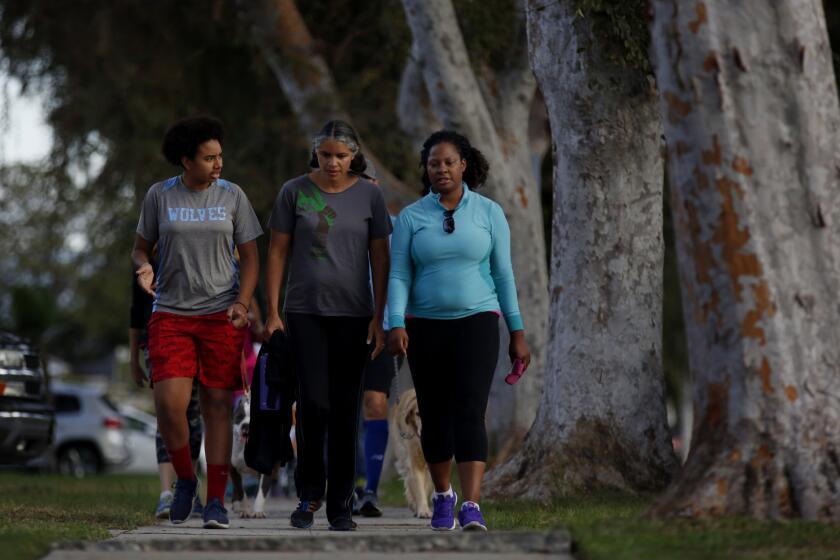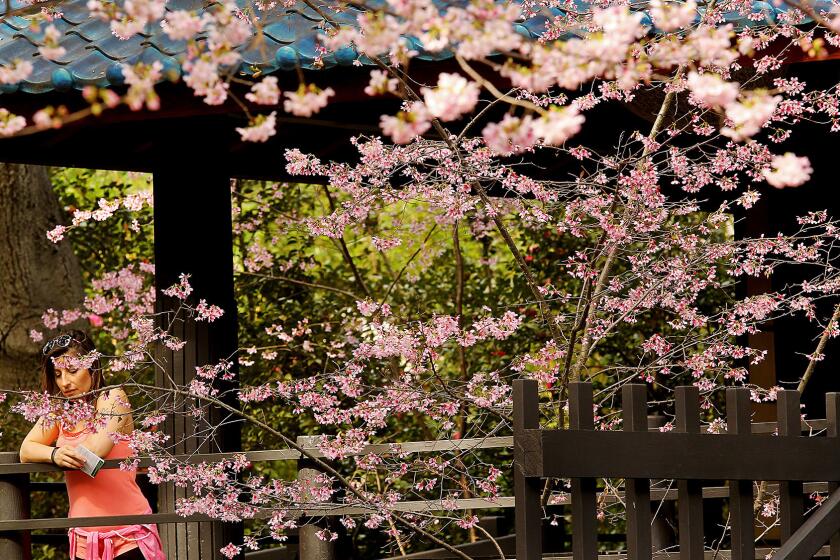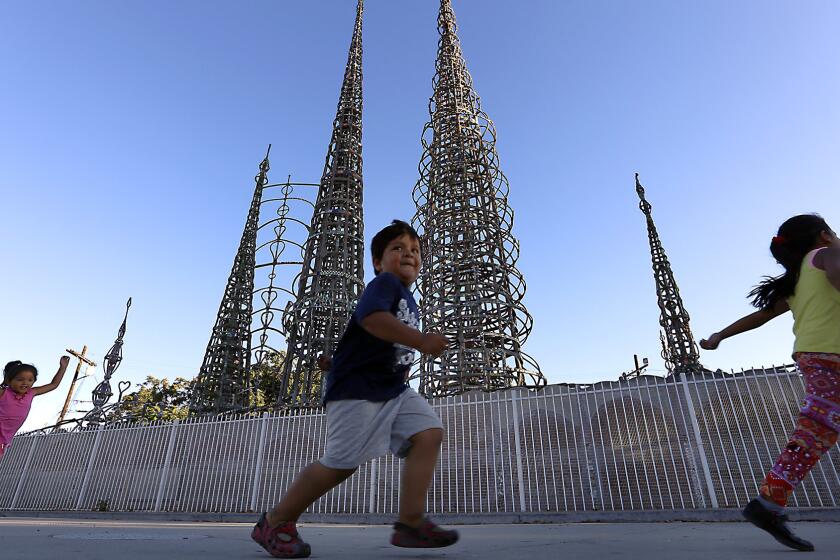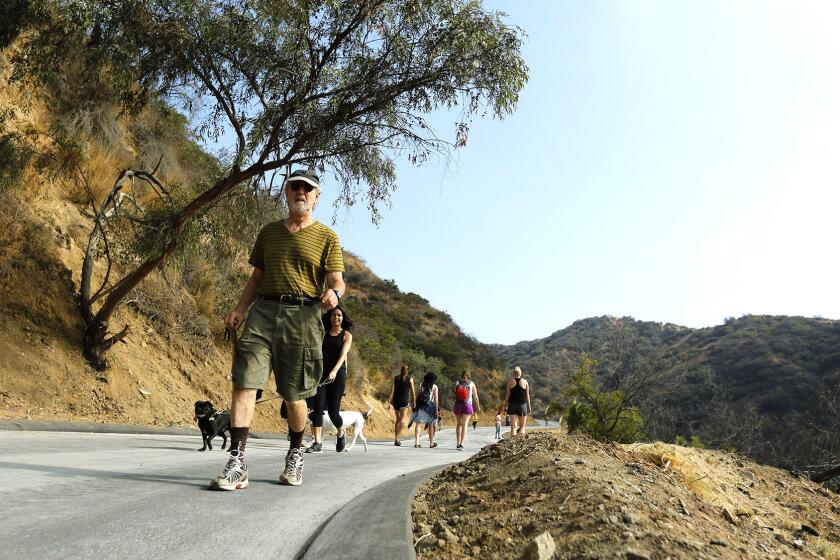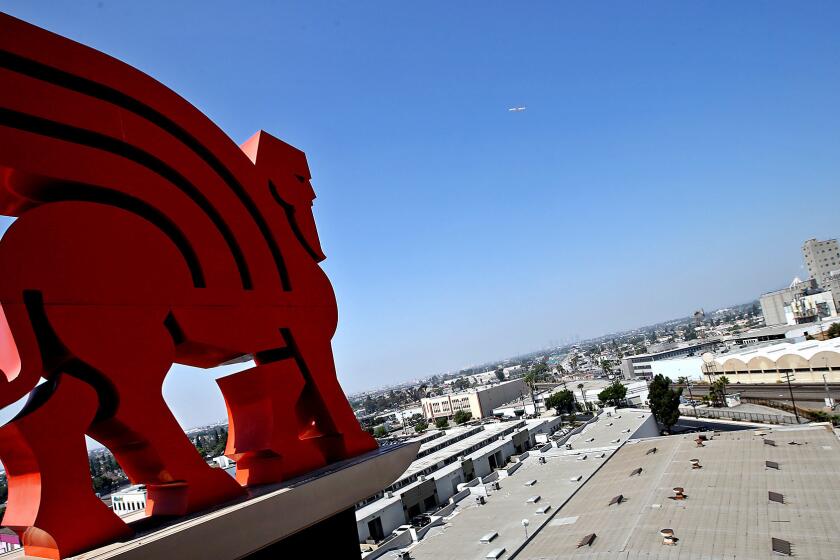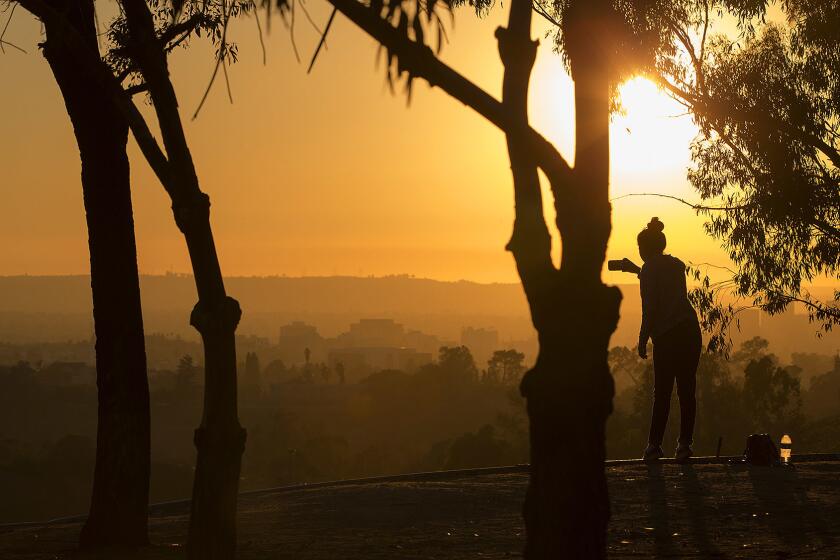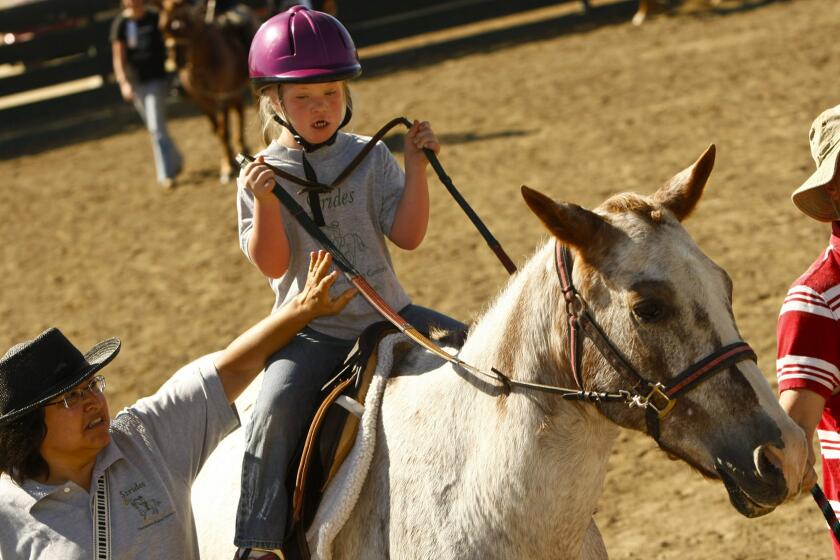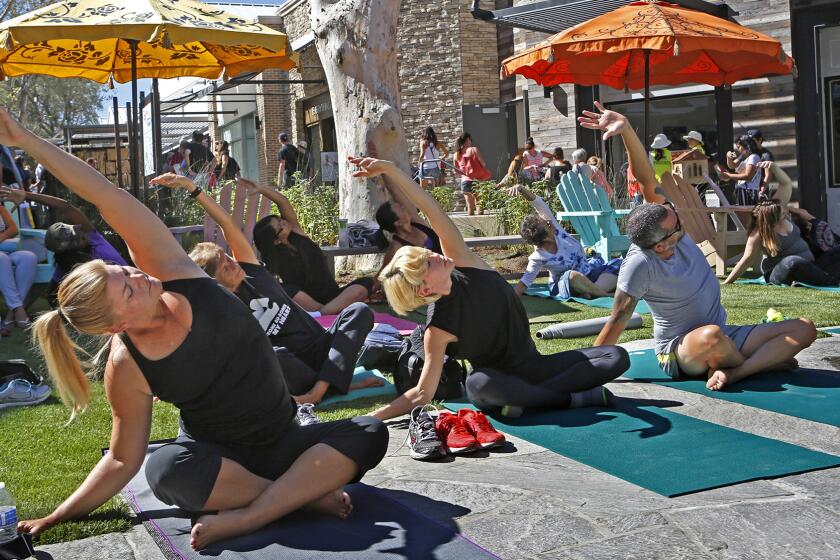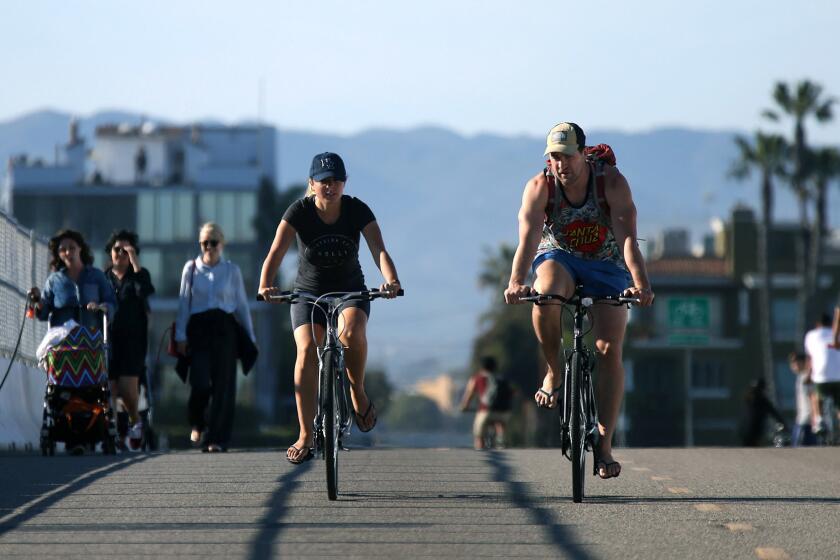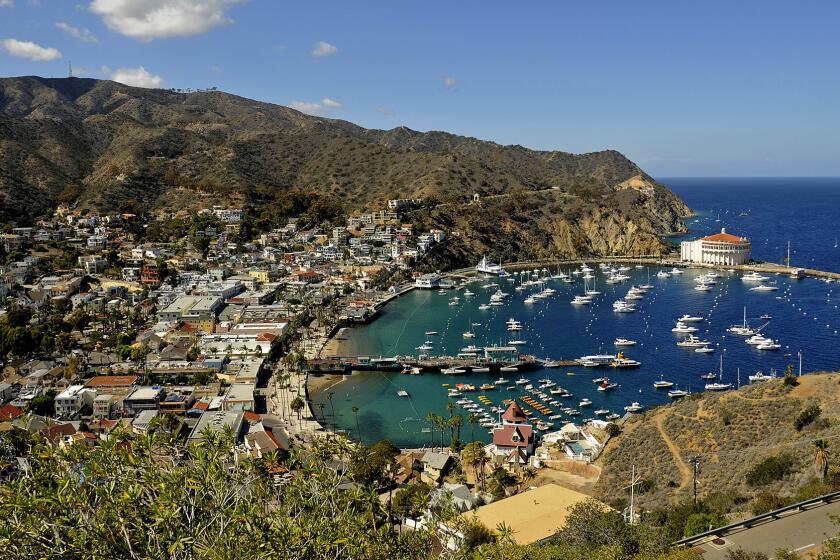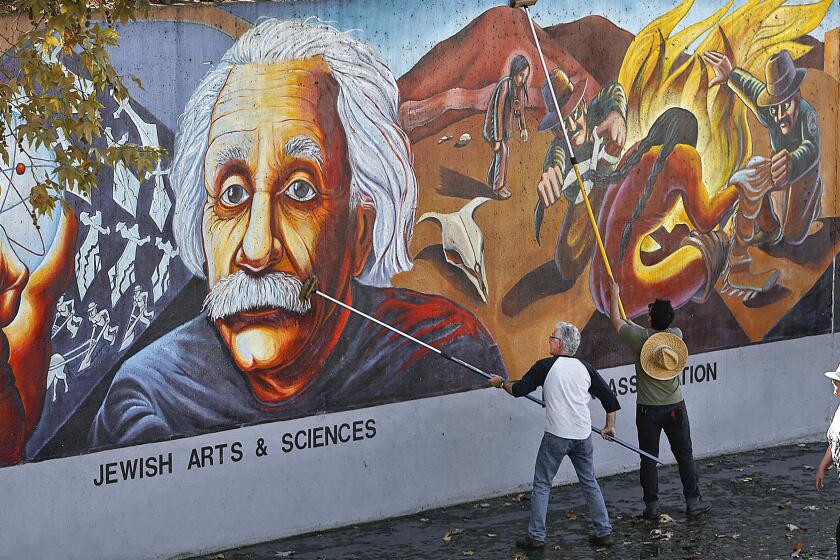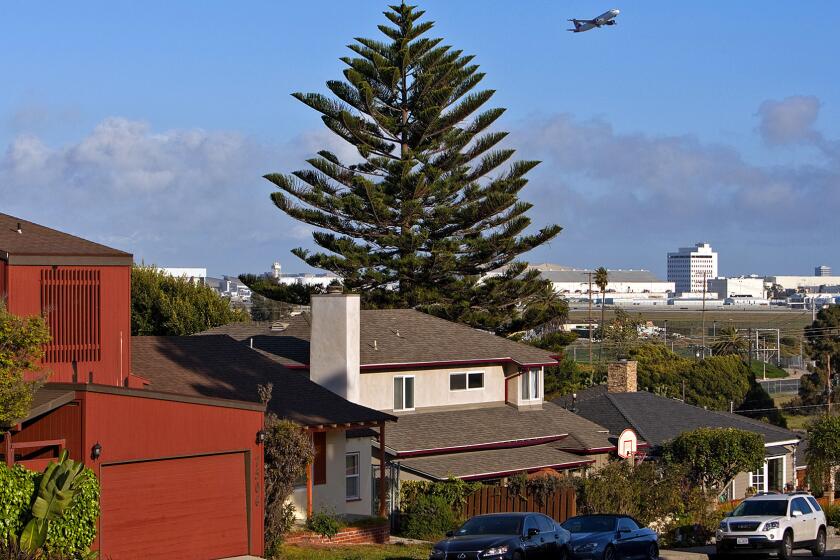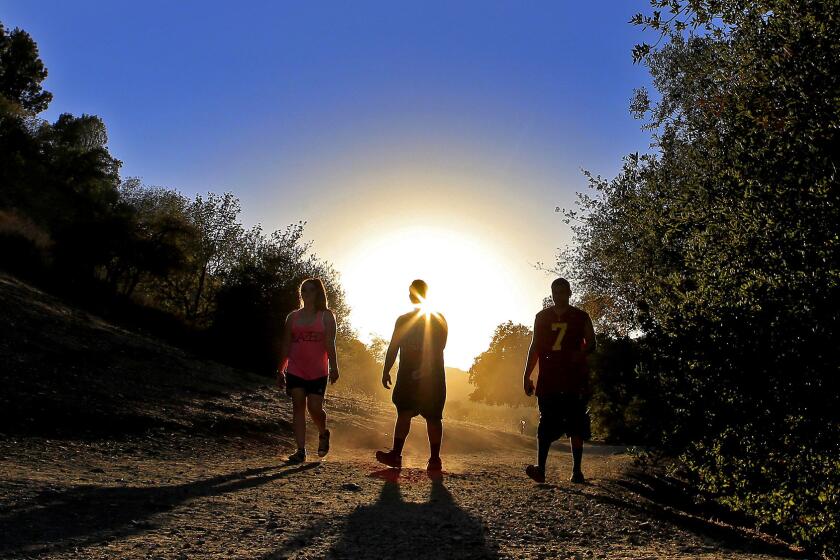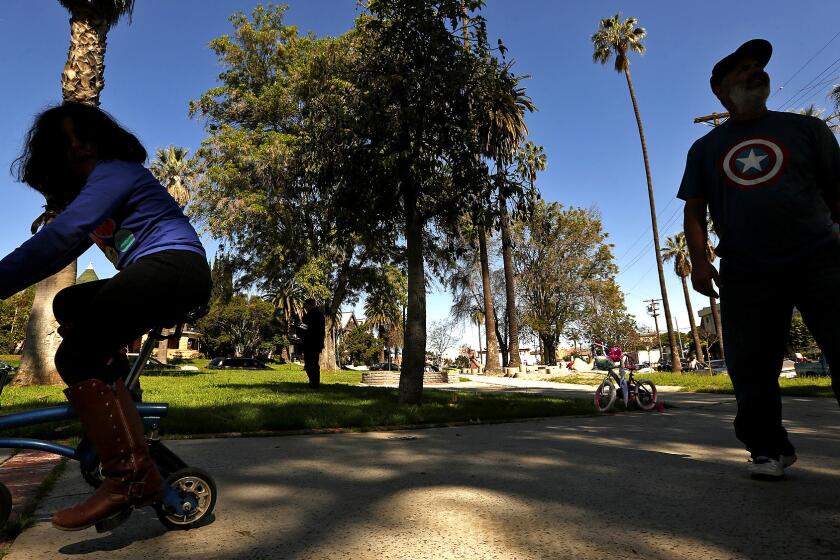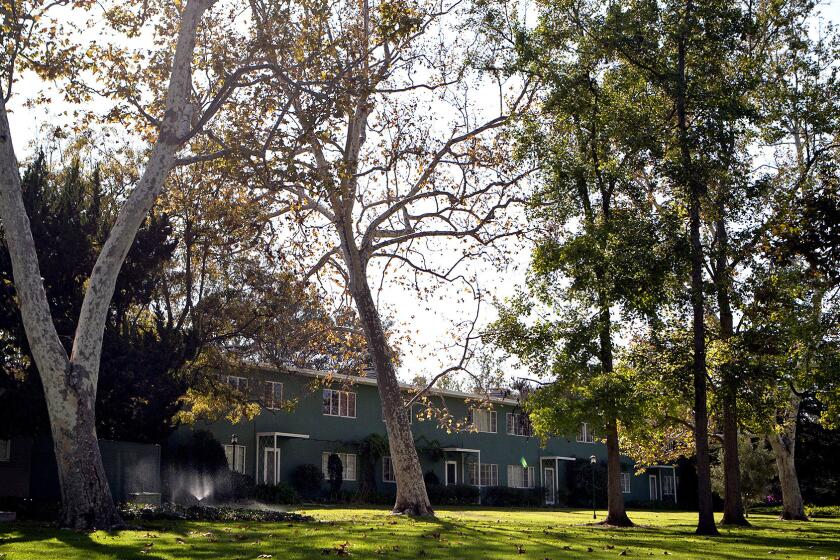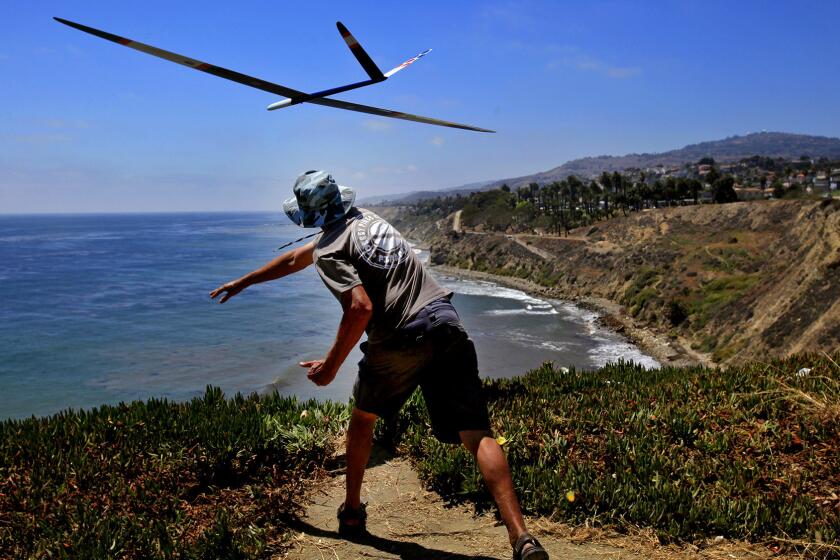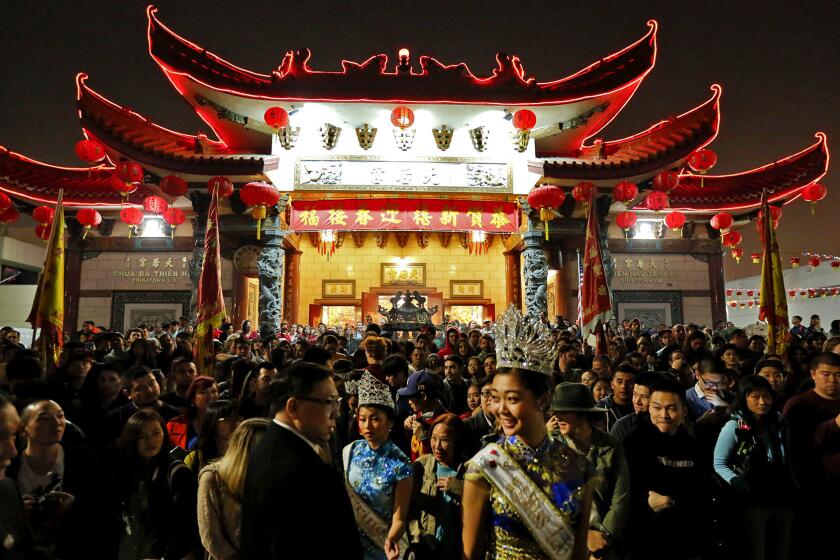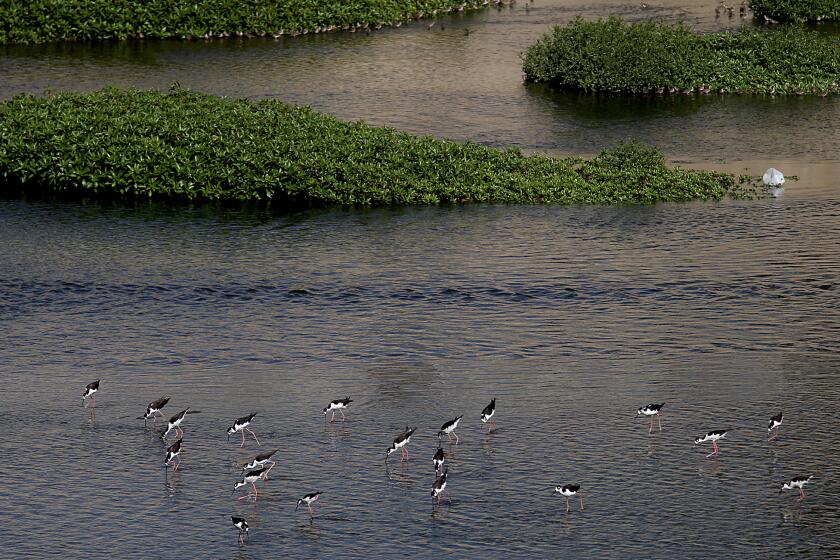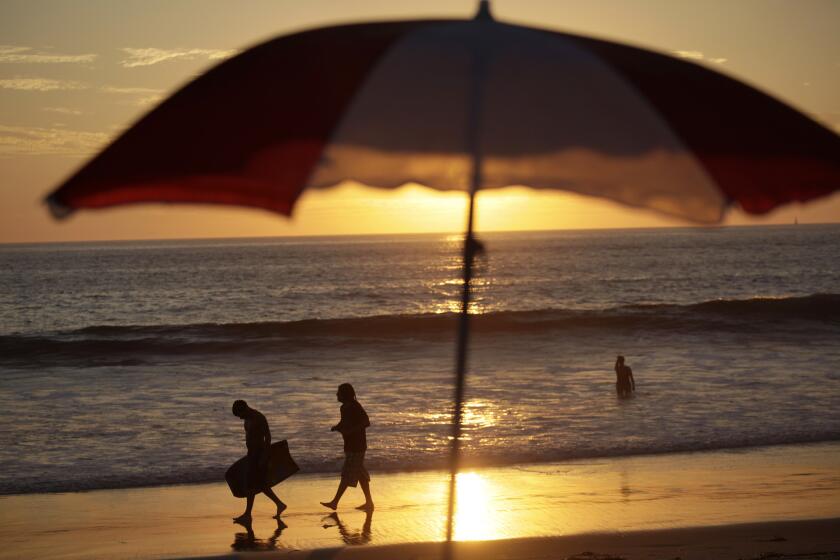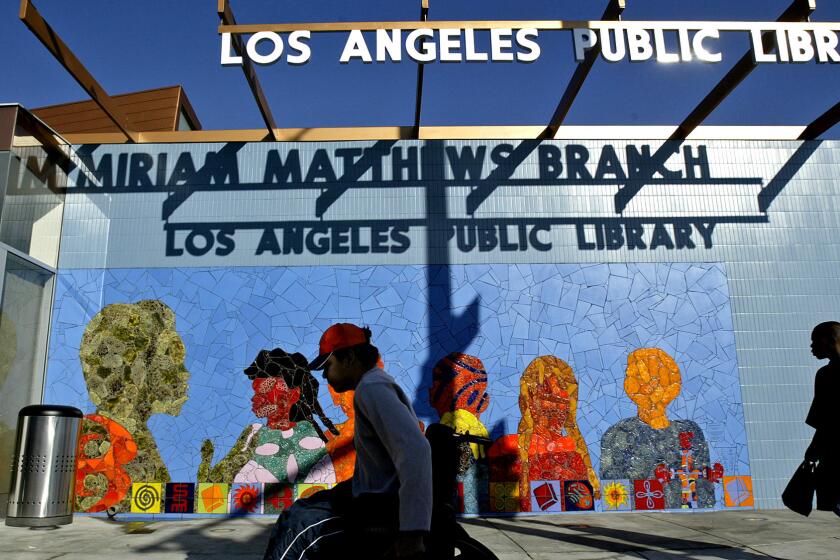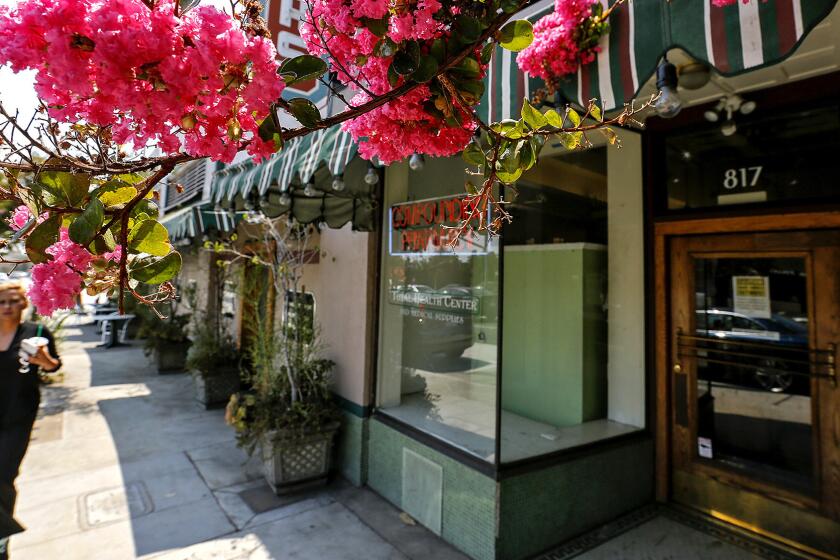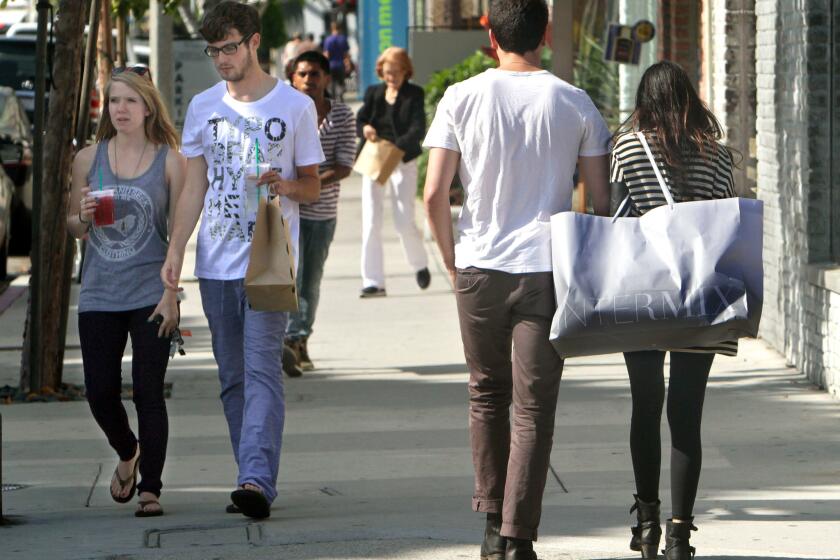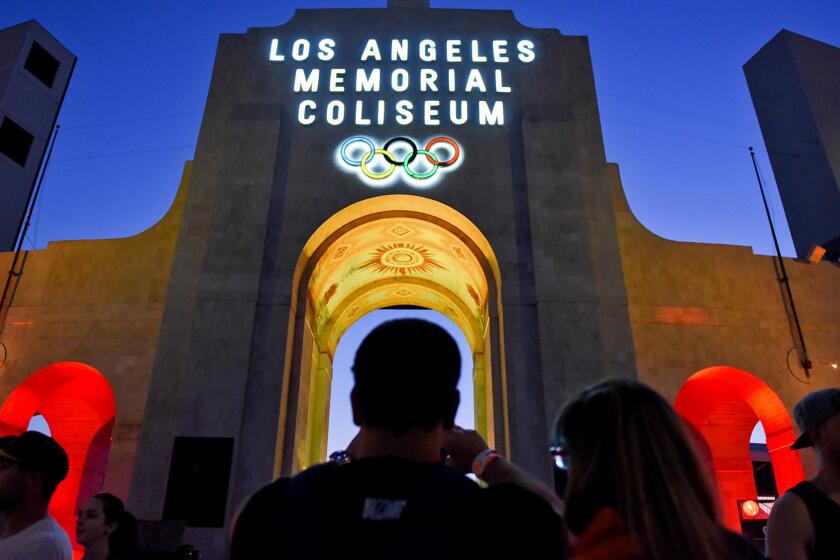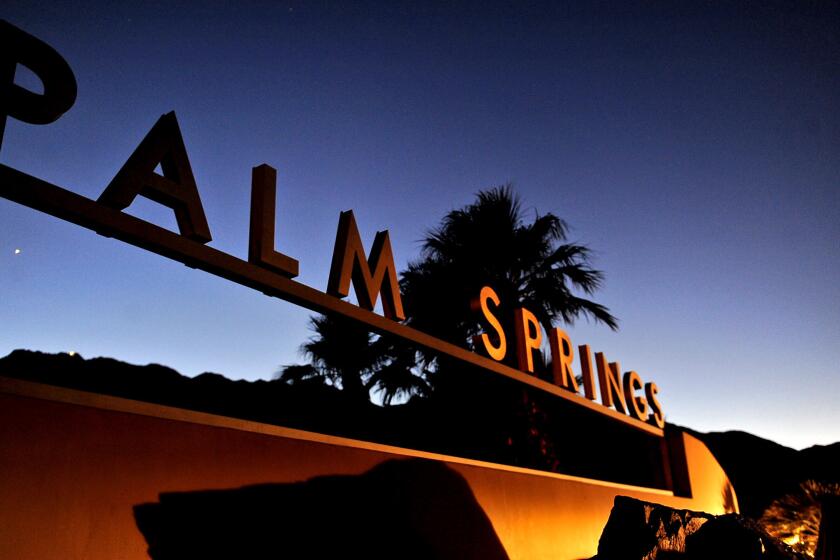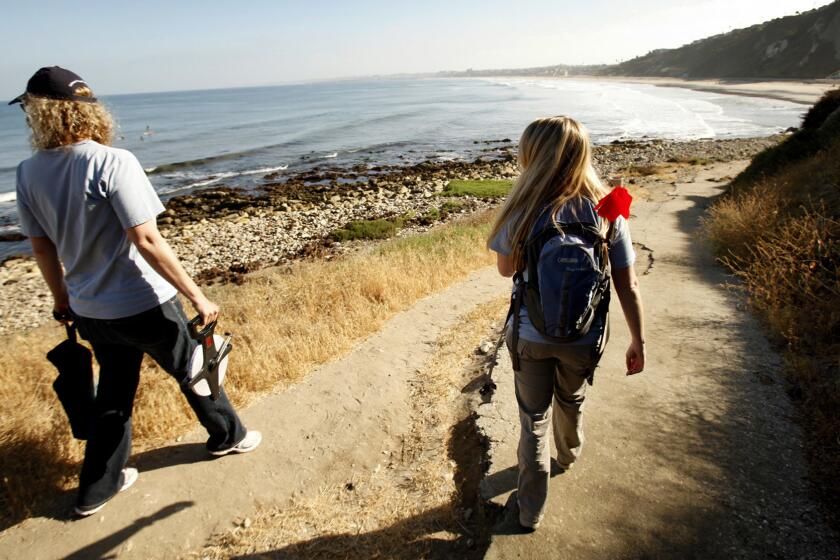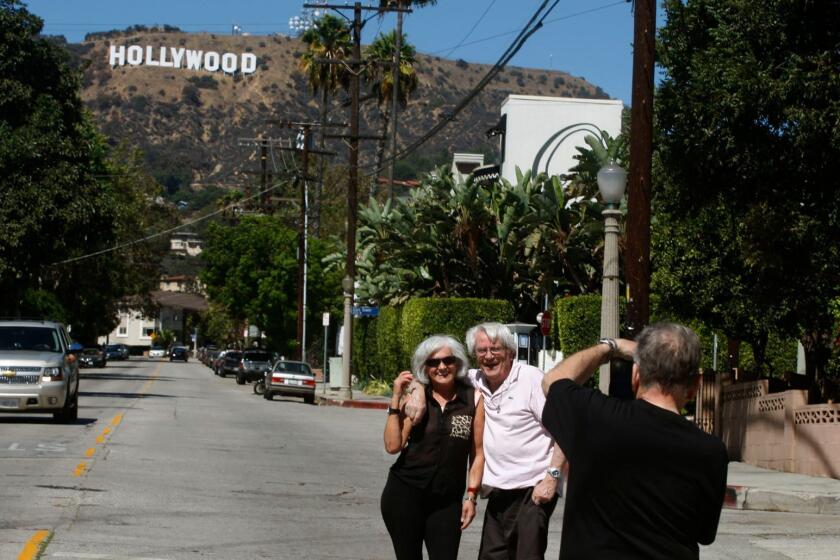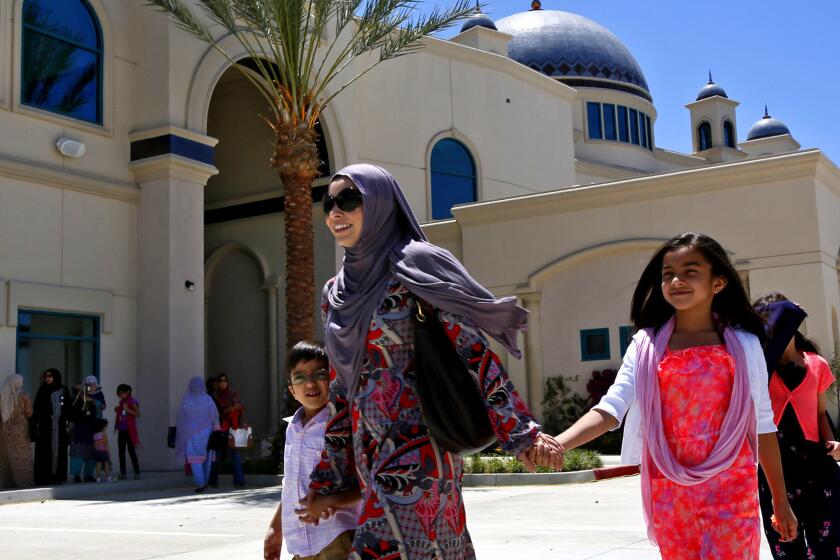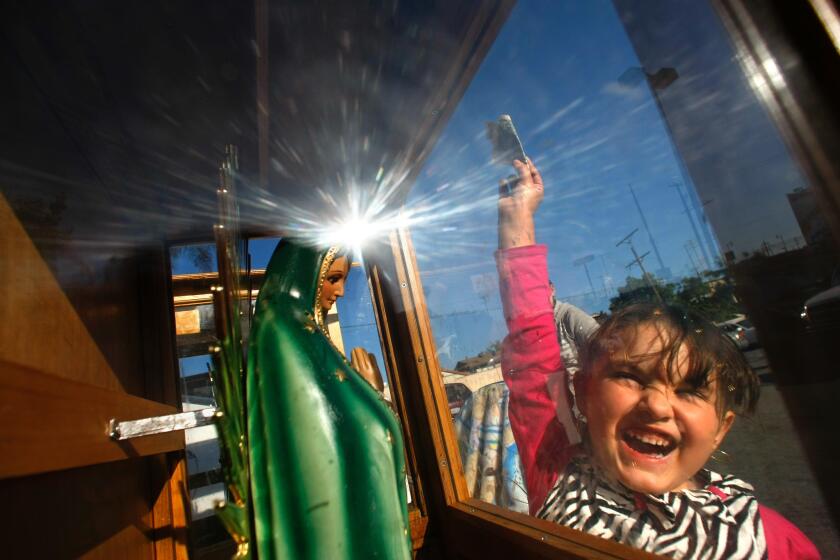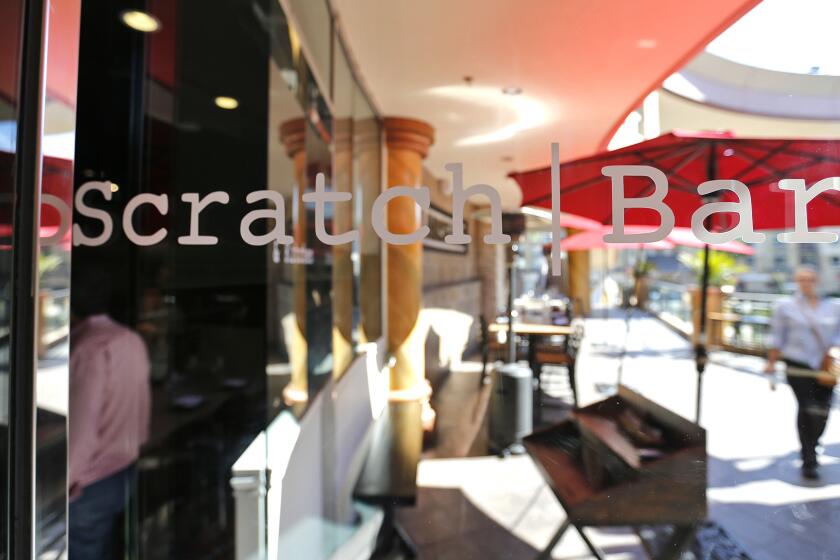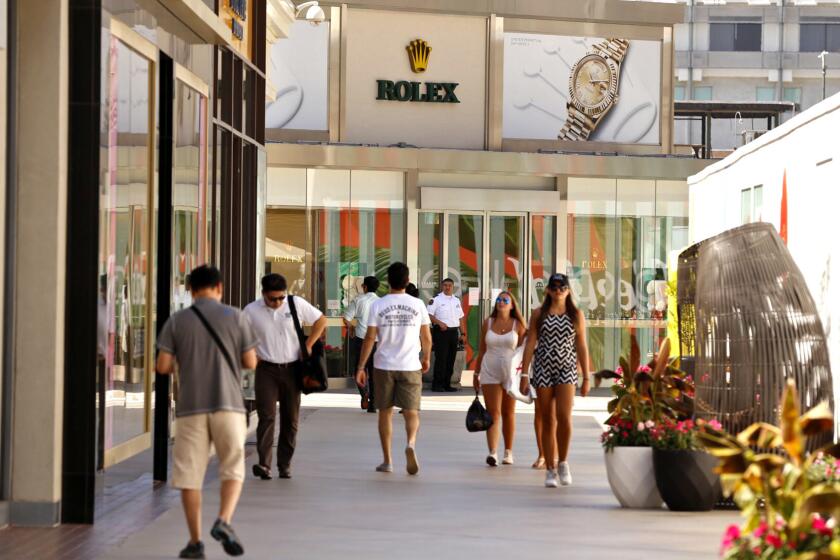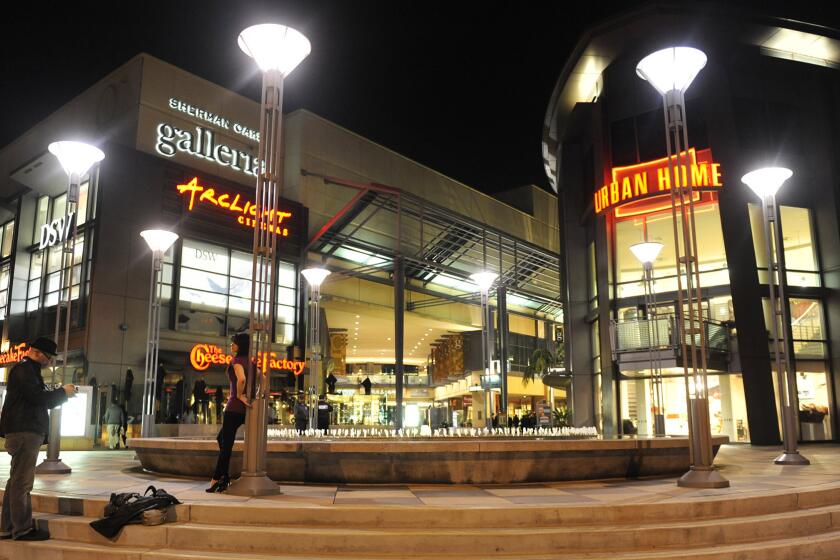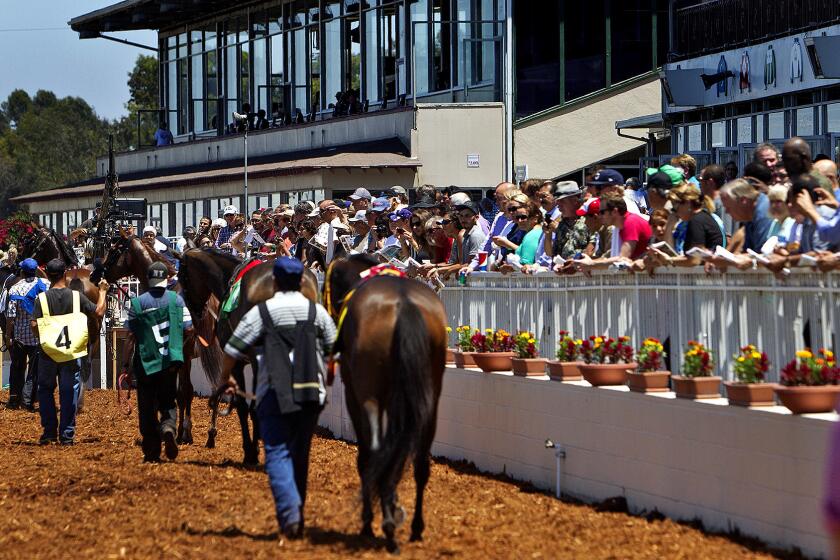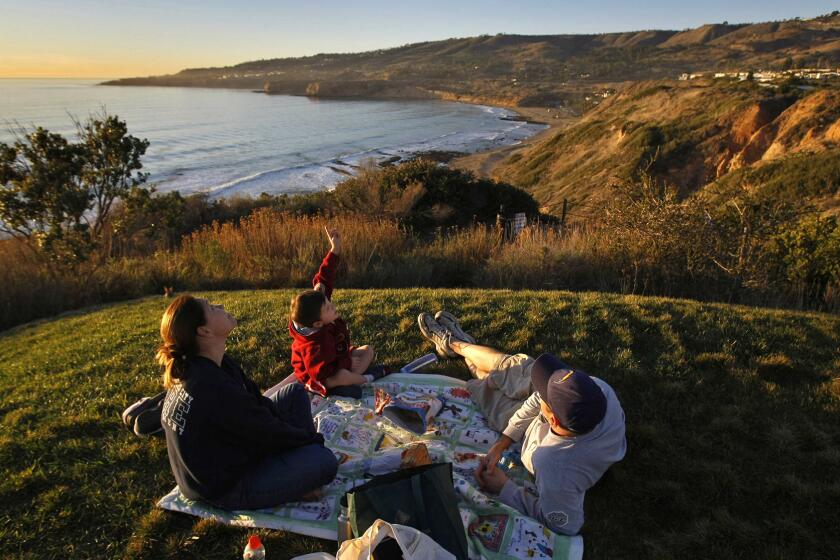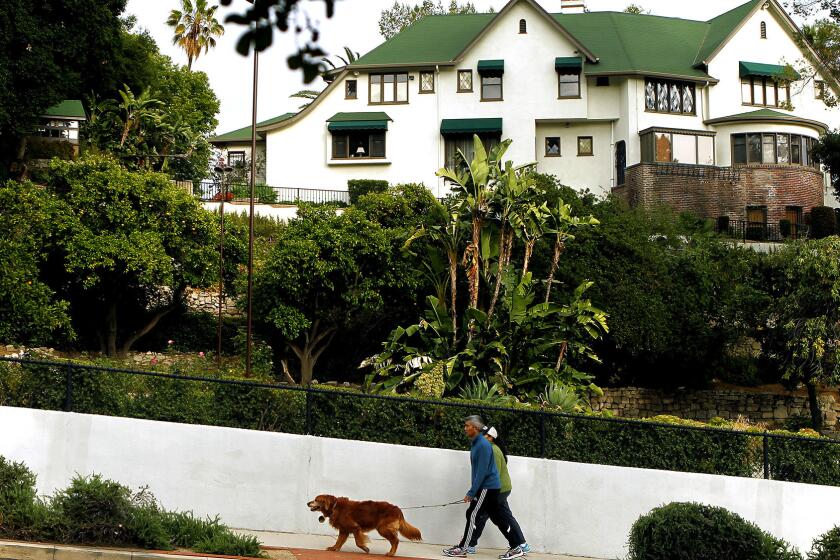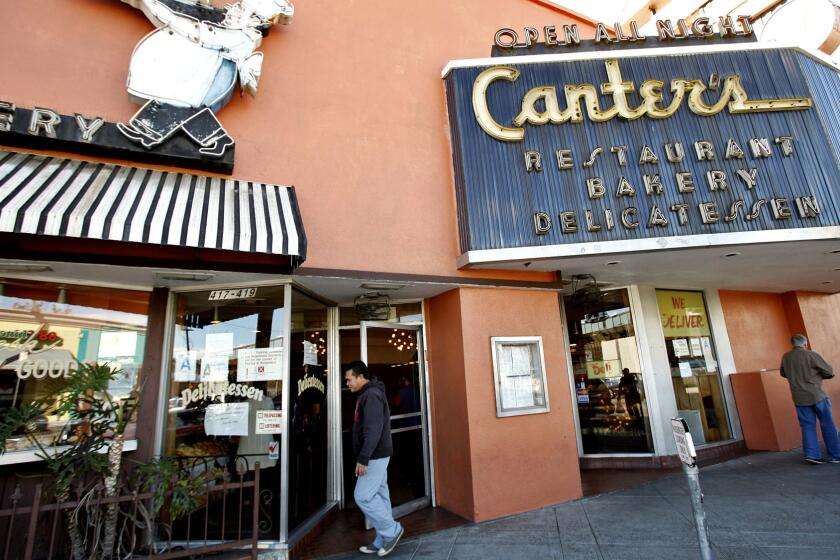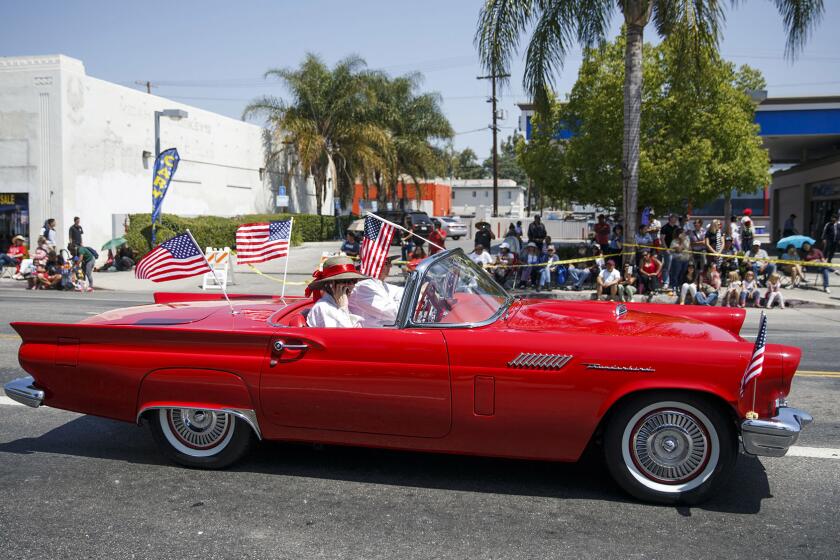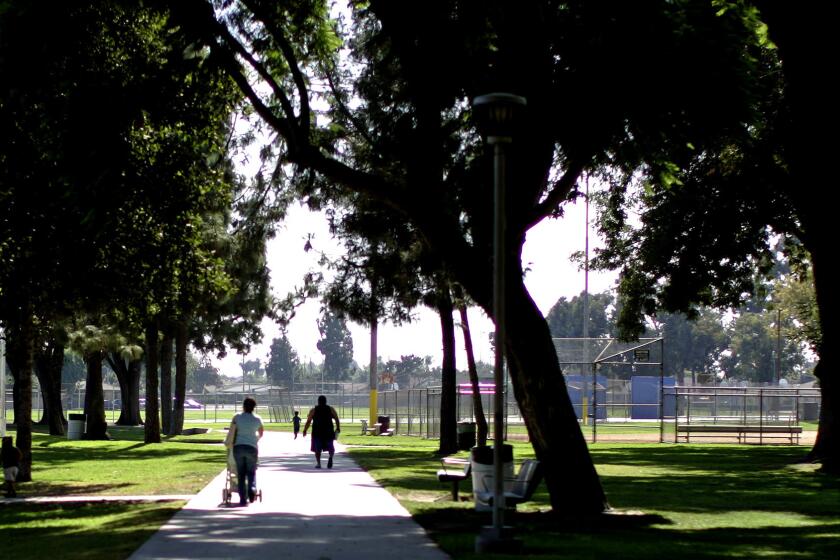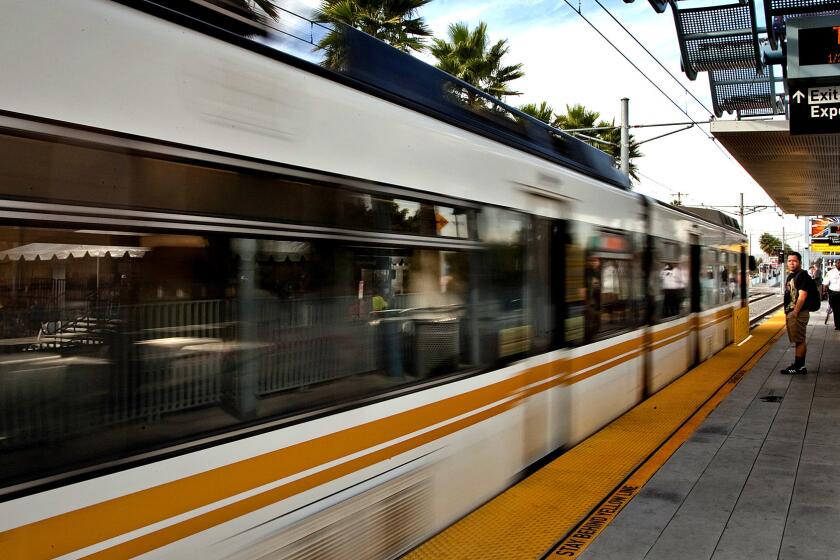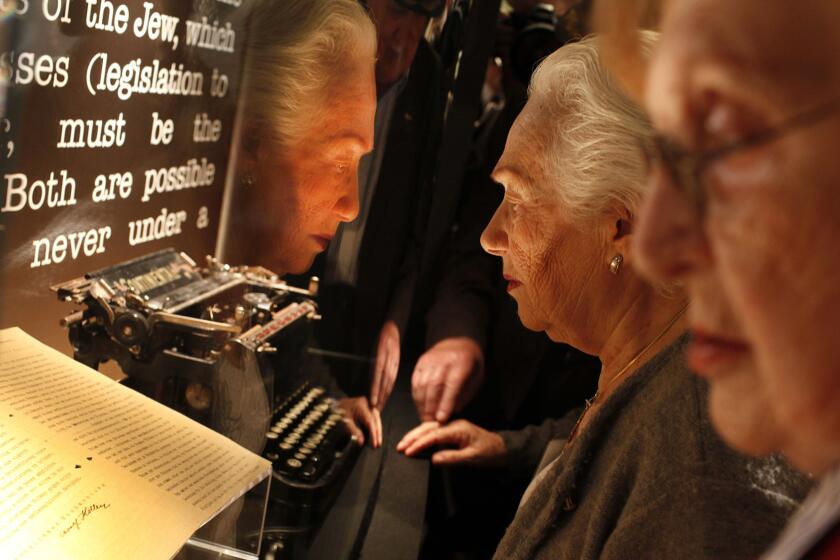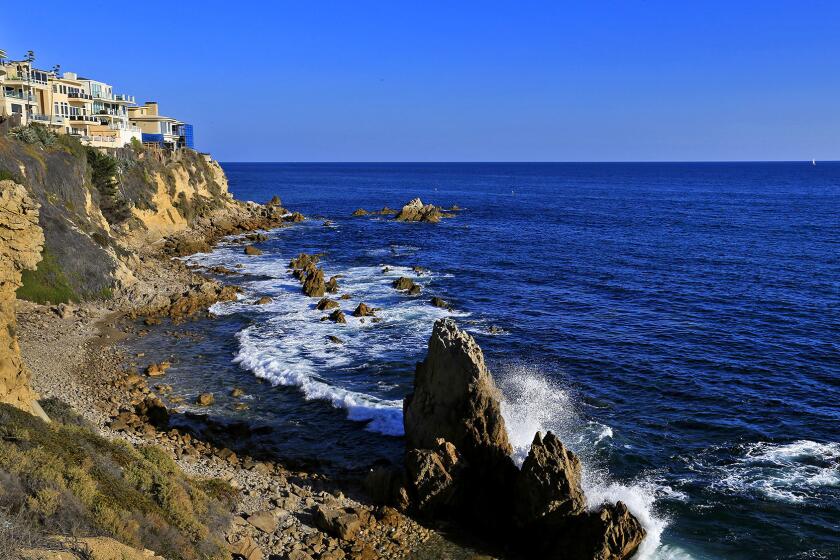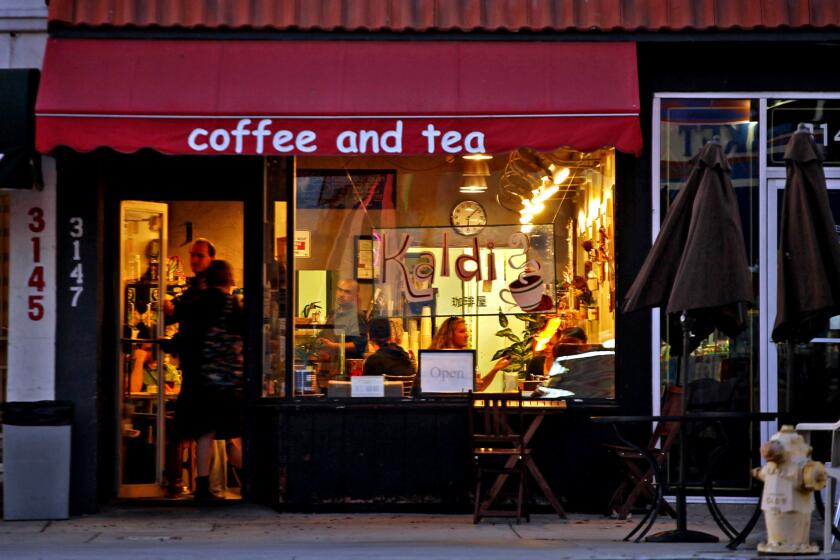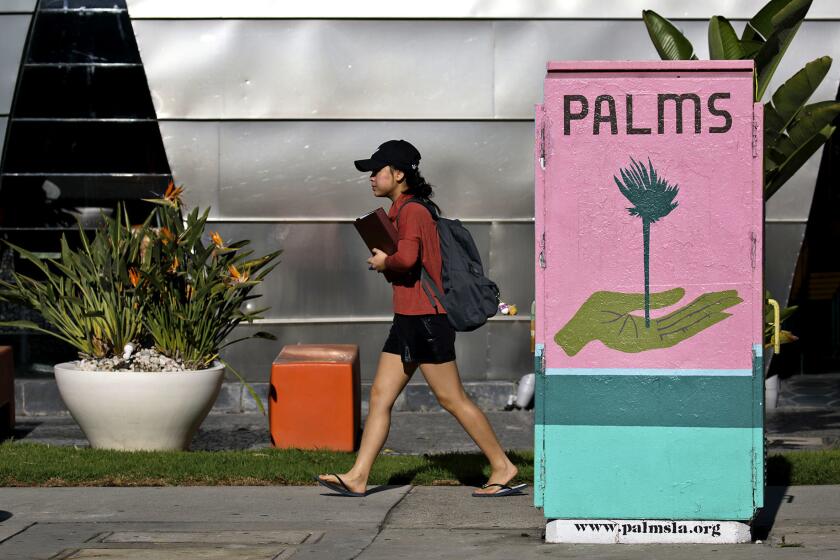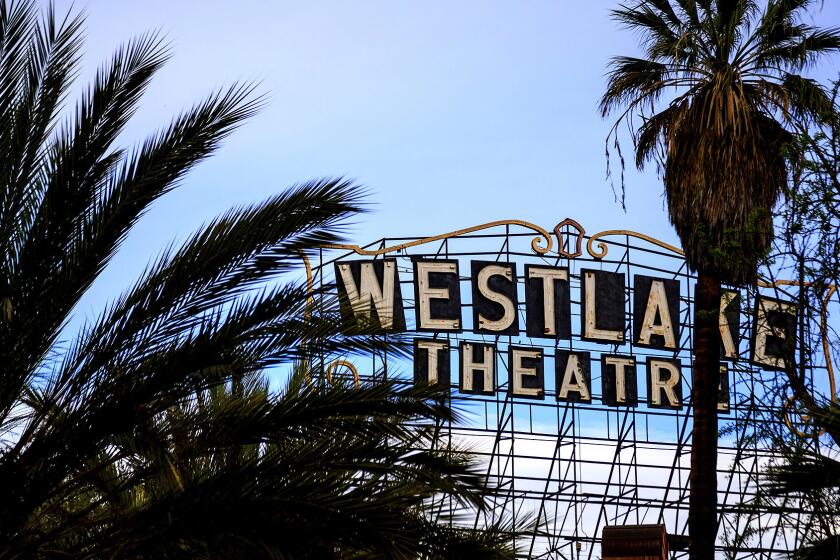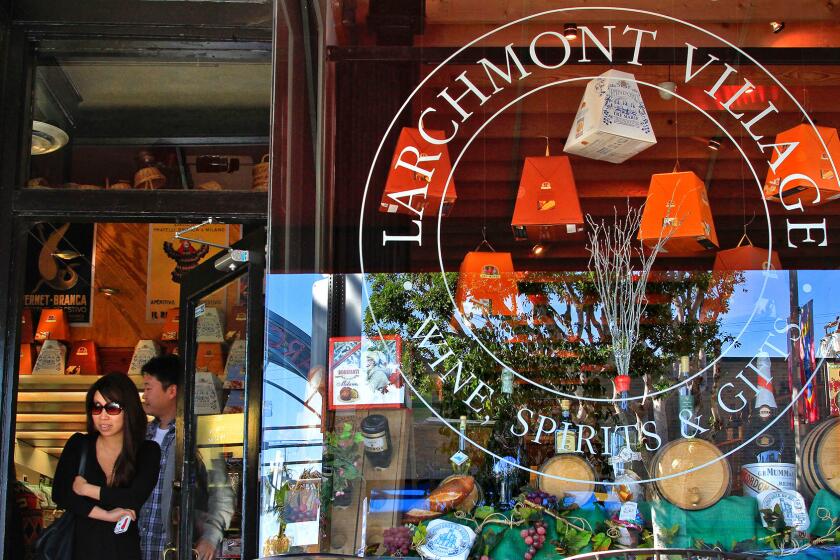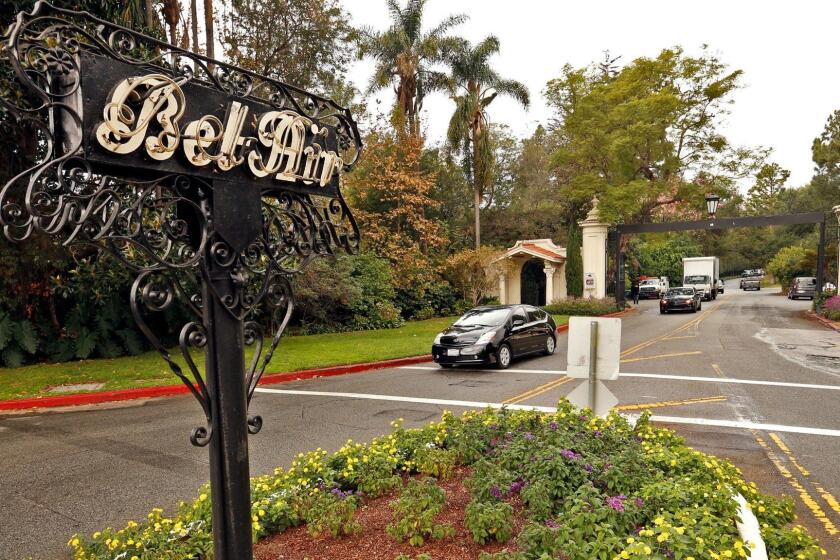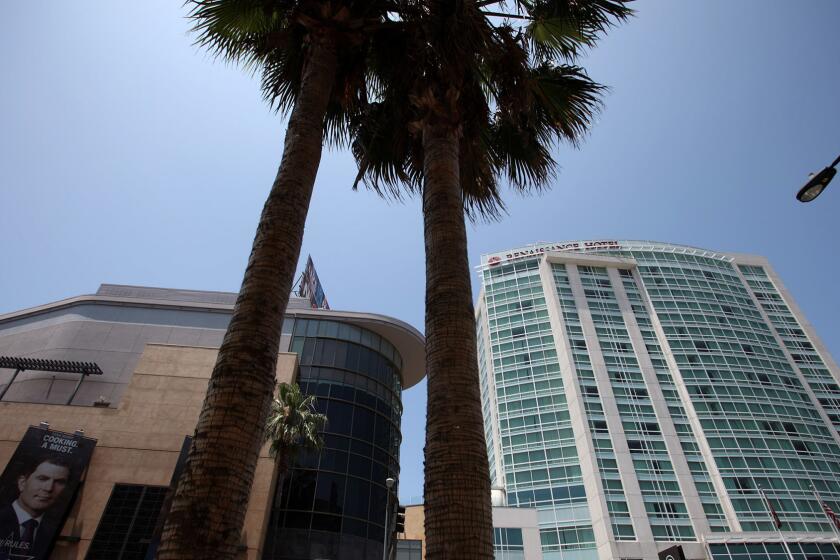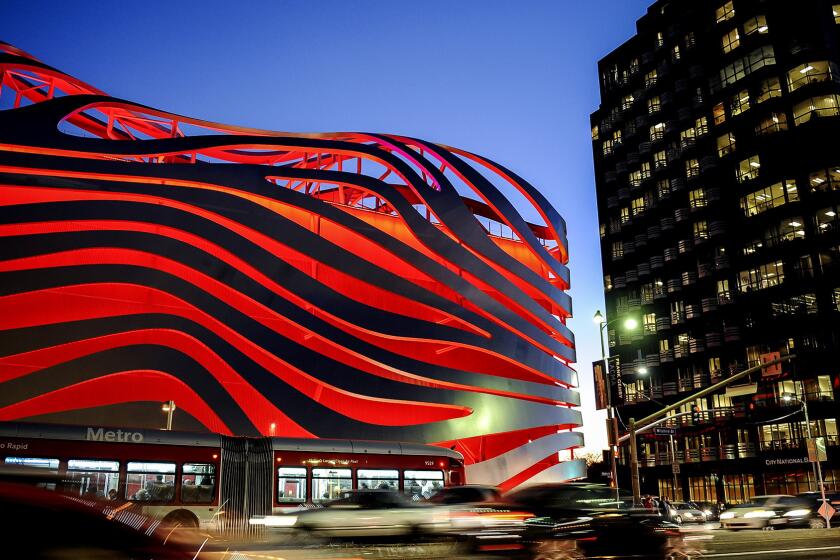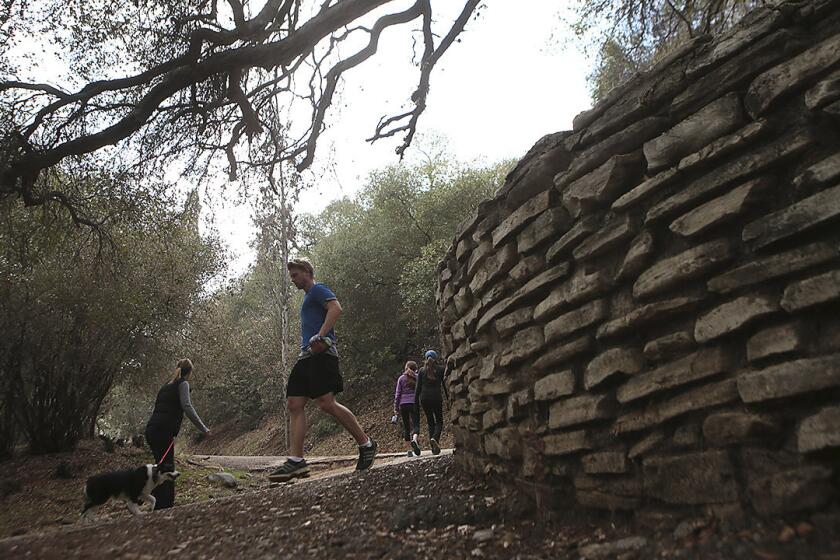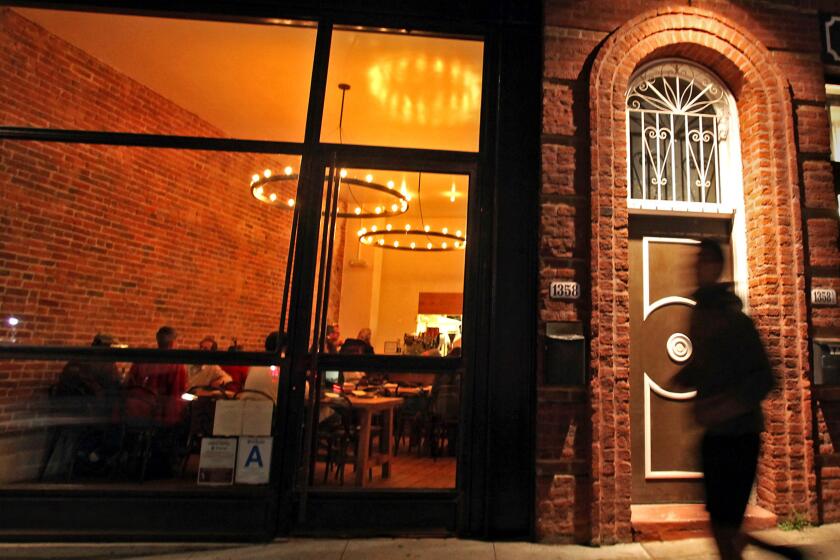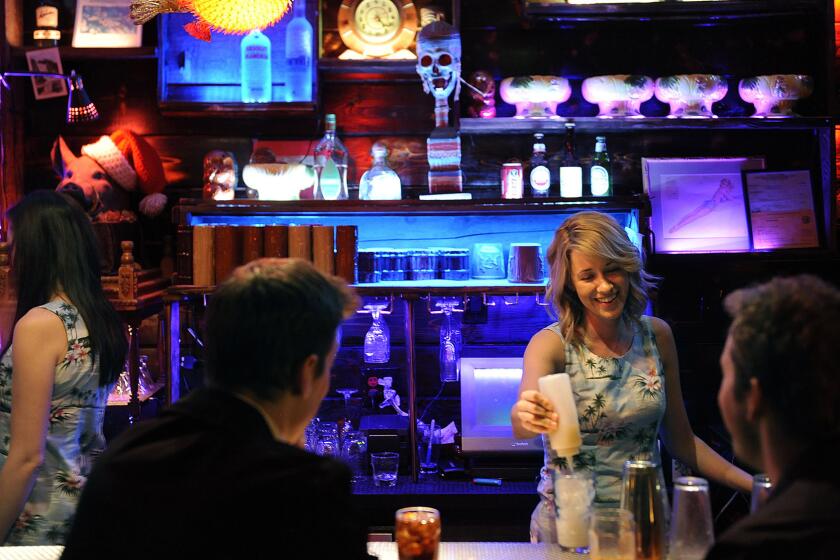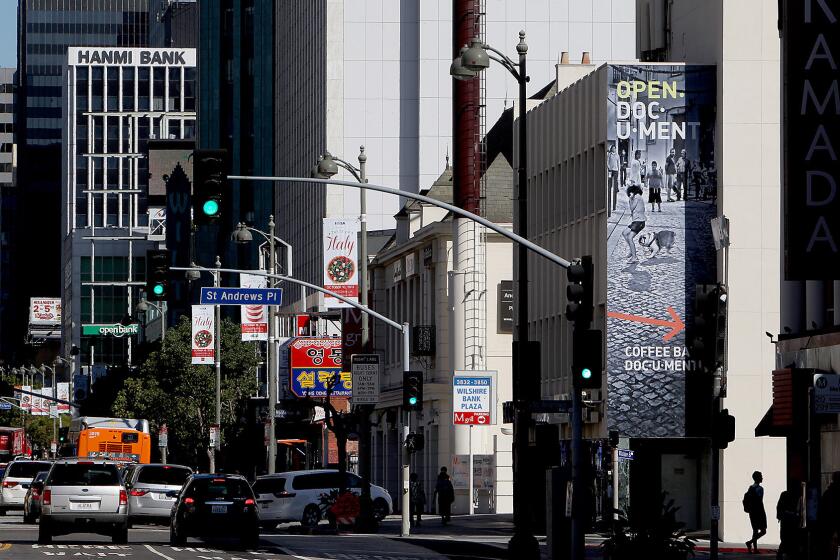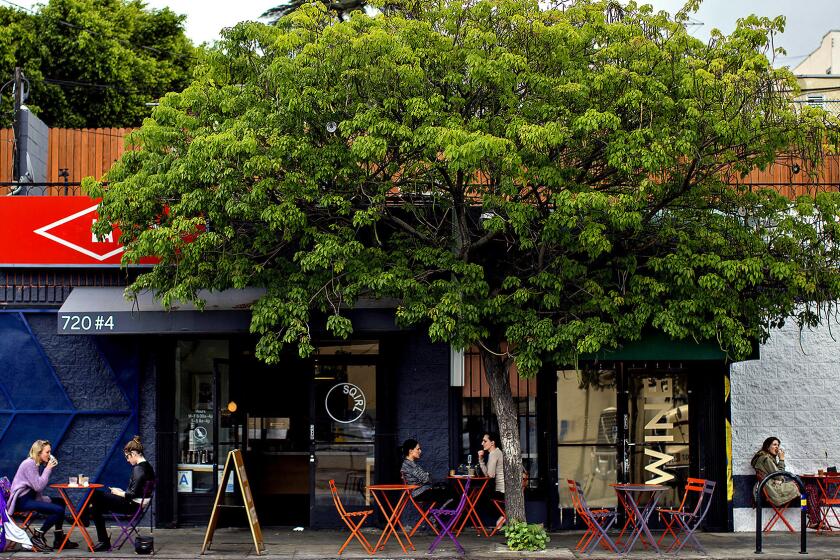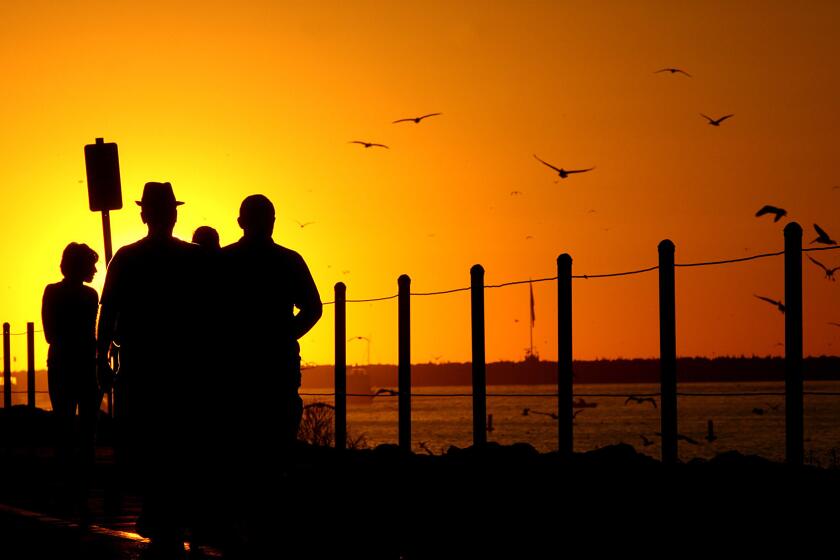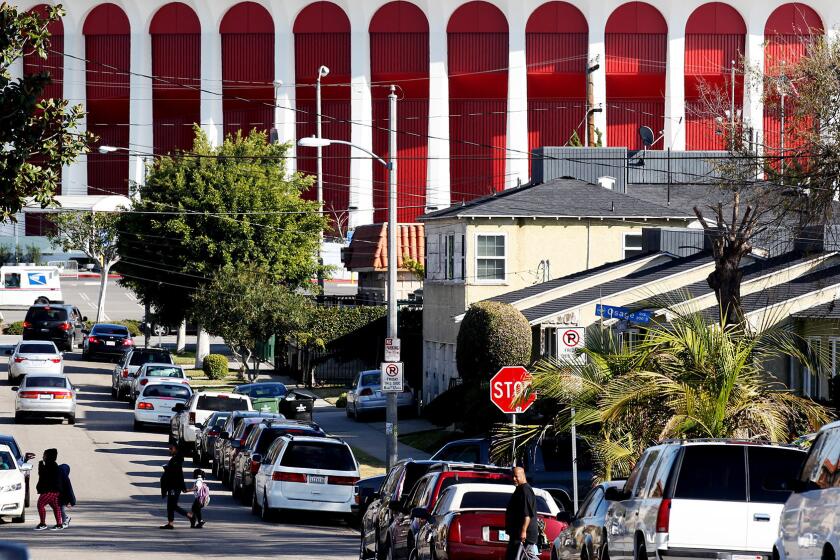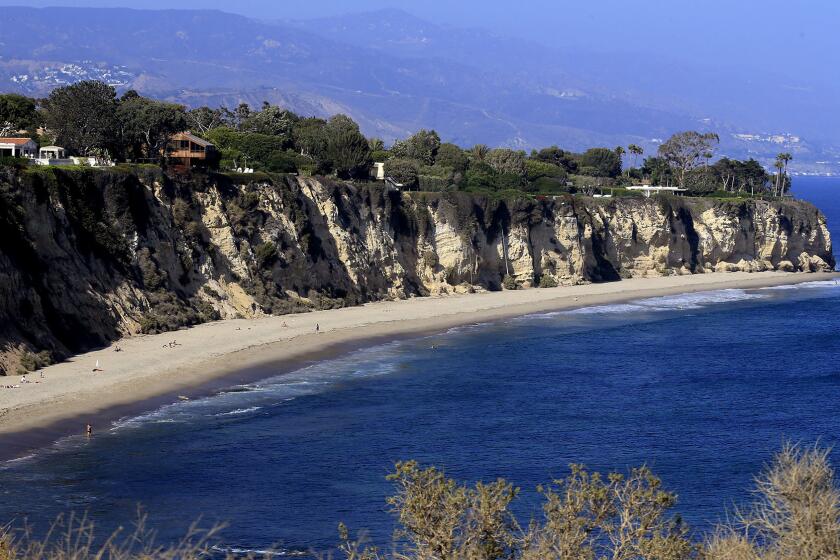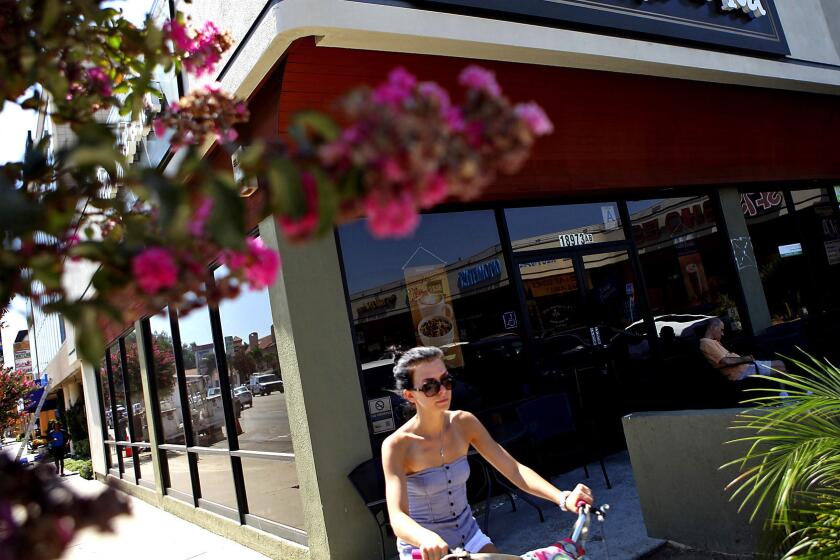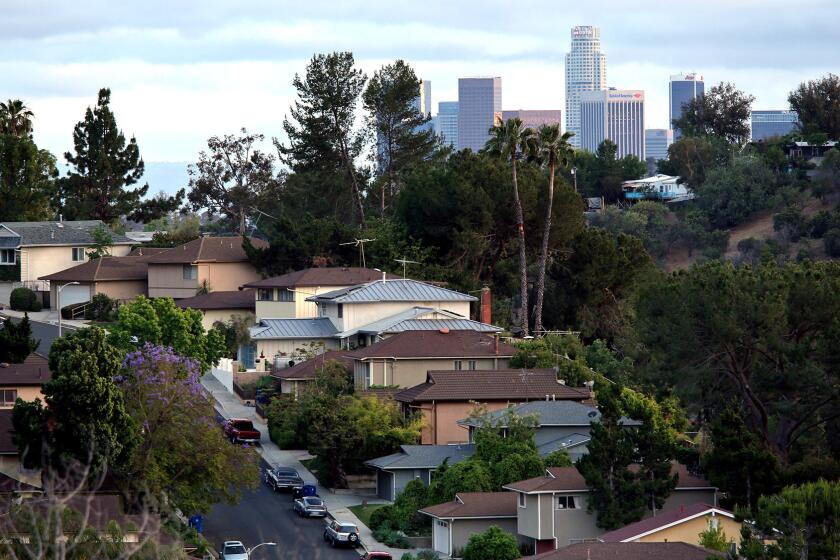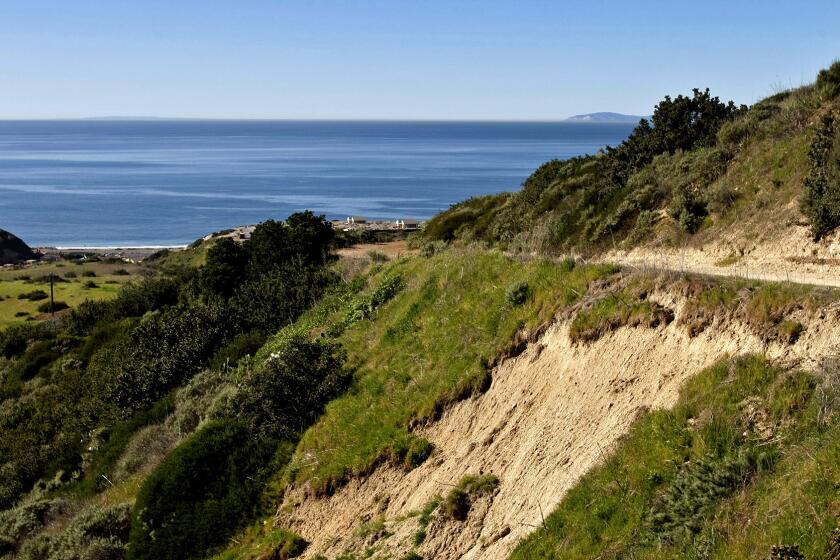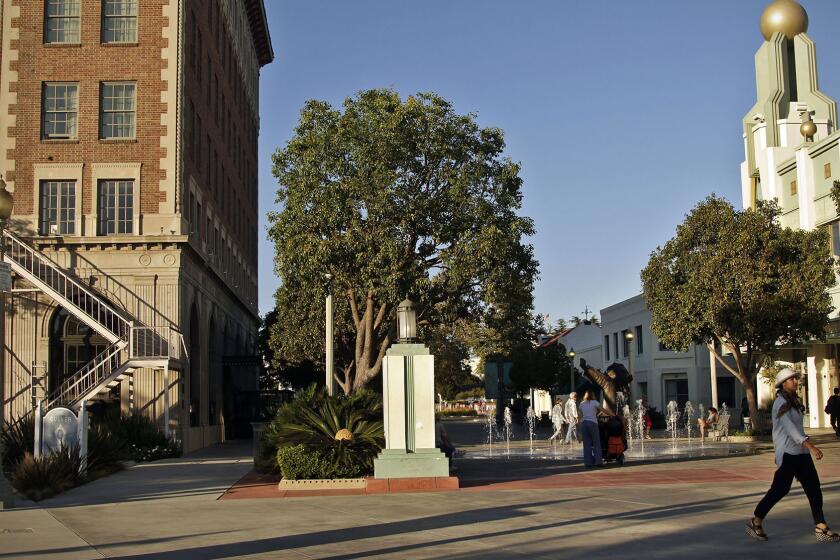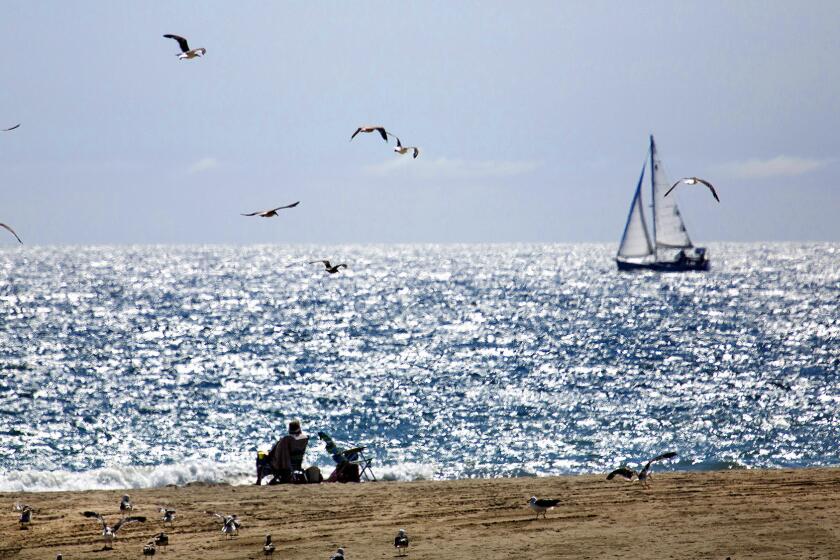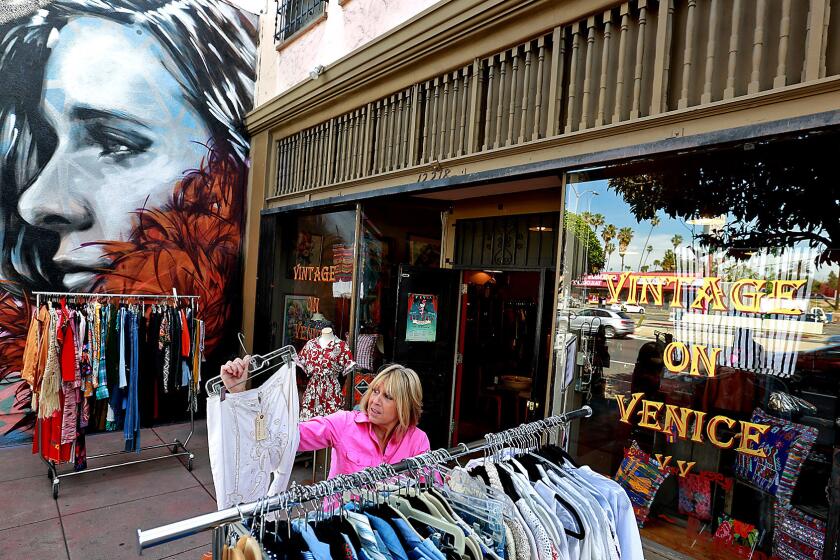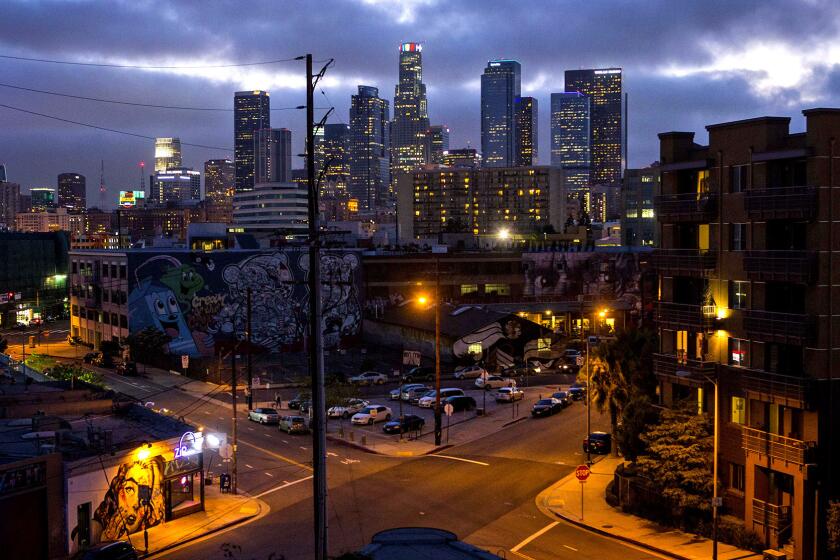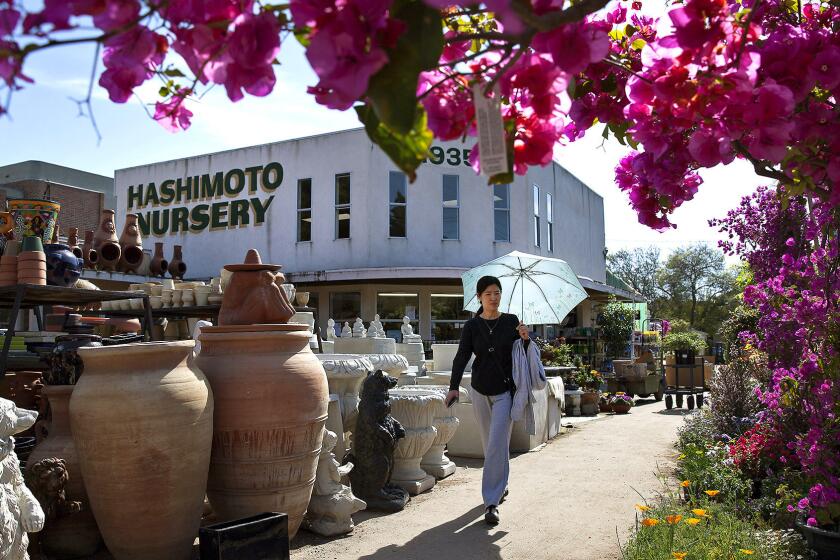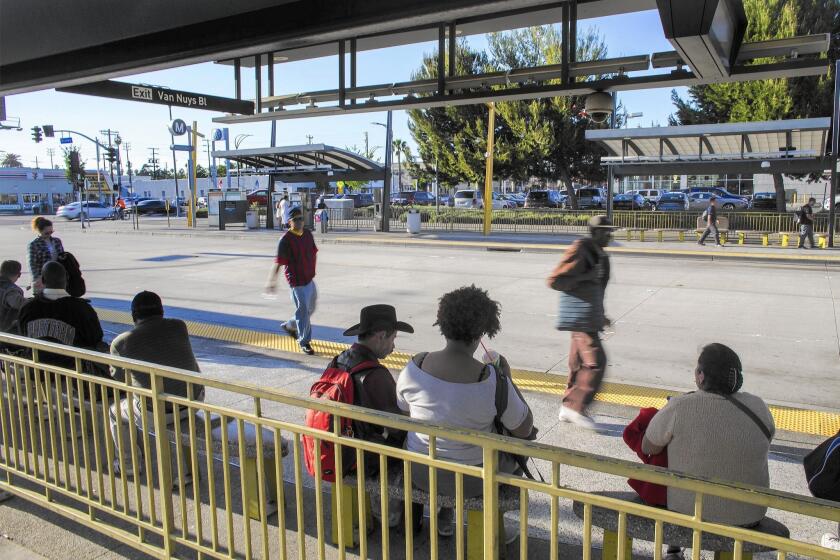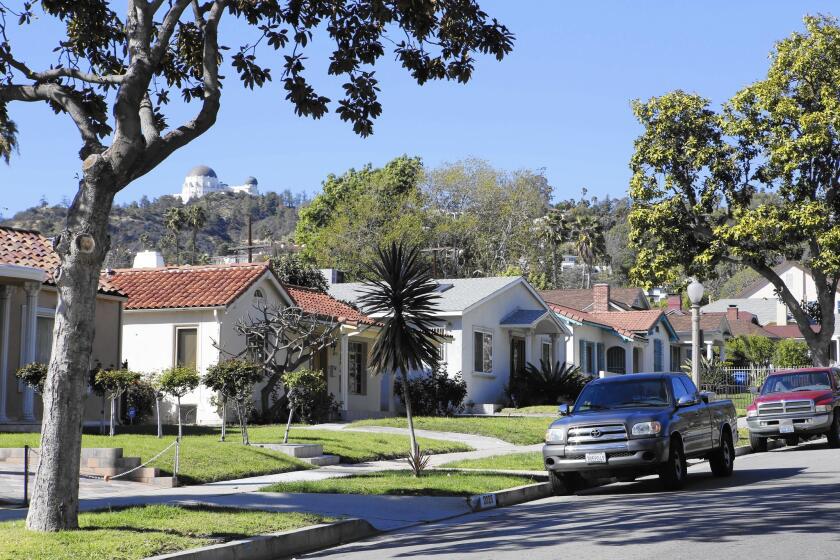Full Coverage: Neighborhood spotlight
- 1
What is it about the canyons of Los Angeles that they attract artists, musicians, writers, actors and an array of folks representing an astounding variety of spiritual pursuits?
- 2
As perhaps befits a midsize city far from the region’s coastal urban core, Pomona has cannily counterprogrammed against its glitzy neighbor to the west with distinctly unflashy diversions such as the county fair and a motor speedway.
- 3
On a long, narrow strip of land wedged between the steep eastern slopes of Elysian Park and a gently undulating stretch of the Los Angeles River is Elysian Valley, a small pocket of Los Angeles whose distinct character has been shaped by its geographic isolation.
- 4
One of the endearingly ironic things about the Los Angeles area is that its place names often gesture toward the sylvan past, no matter how incongruous all of the “Gardens,” “Parks” and “Woods” strewn across the basin by real estate developers of yesteryear are to the realities of life in today’s congested metropolis.
- 5
Like the rest of the Gateway Cities, Bell Gardens was once part of the vast landholdings of Don Antonio Lugo, who in 1810 received a big swath of ranch land from the king of Spain in recognition of his military service.
- 6
Los Angeles in 1910 was racked by labor strife, and a strike by the city’s ironworkers did not sit well with the business community.
- 7
One of the best-kept secrets of Los Angeles is the surprising number of equestrian communities scattered along the fringes and tucked into the nooks and crannies of the city’s 469 square miles of plains, hills and mountains.
- 8
On the southern slopes of the Baldwin Hills, just a stone’s throw from the pump jacks that dot the Inglewood Oil Field, lie the upper reaches of Ladera Heights, one of the wealthiest neighborhoods on the Westside.
- 9
The origins of Sun Valley were modest indeed: It started with a water tank.
- 10
The city of Signal Hill takes its name from the promontory at its heart, a rise that juts 365 feet above the plains of the southern Los Angeles Basin.
- 11
Although the San Fernando Valley is perhaps best known as the birthplace of car-centric suburban sprawl, it is also home to Panorama City, a meticulously planned community that from its start strove to create a balanced neighborhood consisting of residential, commercial and industrial land uses.
- 12
Rancho Park, like much of the Westside of Los Angeles from the arrival of Europeans in the region until the real estate boom of the 1920s, was once given over entirely to agricultural uses.
- 13
From its beginnings in the late 1860s, Compton has always been a place that has tested its residents, whether through natural disaster or societal ills.
- 14
While construction of California’s high-speed train lurches in fits and starts, it’s worth remembering that those taking the original overland route between San Francisco and Los Angeles considered themselves lucky to have made it in fewer than three bone-jarring days of stagecoach travel.
- 15
Despite its name, West Los Angeles is not the westernmost part of the city; its western border does not even reach the 405 Freeway.
- 16
Altadena was first envisioned as a suburb for the rich when, in 1887, Iowa natives John and Fred Woodbury opened their 937-acre subdivision above newly incorporated Pasadena.
- 17
This year when Kanye West and Kim Kardashian completed the $20-million renovation of their Hidden Hills mansion and moved in, it marked the ascension of the 1.7 -square-mile gated city to the peak of celebrity-enclave heights.
- 18
One of L.A.’s newest neighborhoods, Porter Ranch remained largely undeveloped until the 1960s, when the first cul-de-sacs and tract homes sprouted up in the flats beneath the Santa Susana Mountains.
- 19
Nestled in the scenic foothills of the San Gabriel Mountains, Sierra Madre retains much of the quaint character that made the town and its surrounding environs a popular tourist destination during the late 19th and early 20th centuries.
- 20
More than any other neighborhood, with the possible exception of Sherman Oaks, Reseda has been called upon again and again to represent the experience of the San Fernando Valley in popular culture.
- 21
For the millions of tourists and Southern Californians who visit Redondo Beach to surf, shop or just stroll down the Esplanade, the appeal of the city as a resort town is readily apparent.
- 22
Mission San Fernando has stood watch over the Valley floor in one form or another for the last 220 years.
- 23
Although star-studded neighborhoods such as Beverly Hills and Bel-Air have become symbols for the concentration of extreme wealth in Southern California, there are other neighborhoods here that are just as lavish but keep a low profile.
- 24
In status-conscious L.A., there are many ways to signal that you are among the region’s elite, and none more so than the place where you make your home.
- 25
The term “Northeast Los Angeles” has come to encompass almost every neighborhood from Vermont Avenue to the Arroyo Seco and north of Sunset Boulevard, but one of the only neighborhoods with a bona fide historical (not to mention geographically accurate) claim to the designation is Montecito Heights.
- 26
To stand along the fence of Palisades Park and look out over the ocean, it’s hard to imagine anyone taking in the same vista and imagining a destiny for Santa Monica other than that of a scenic seaside resort town.
- 27
The recorded history of Agoura Hills begins, like so many other Southern California cities, with the bestowment of a grandiloquent place name by Franciscan missionary Father Juan Crespi.
- 28
The land upon which South Gate sits was once the site of Rancho San Antonio, a sprawling 30,000-acre spread that the king of Spain granted to Antonio Maria Lugo upon his retirement from the Mexican army in 1810.
- 29
Nestled between the much larger San Fernando and San Gabriel valleys lies the unincorporated community of La Crescenta-Montrose.
- 30
Named after the city in southern Spain, Granada Hills was originally marketed as a rabbit-raising community, with developers even adding hutches to the initial batch of homes in the 1920s.
- 31
For thousands of years, the land where the city of San Gabriel now sits was the home of the Tongva people.
- 32
In the 1800s, the king of Spain was in the habit of extravagantly rewarding the civil servants and soldiers who helped tend to his far-flung empire, providing eye-poppingly large land grants to generals and back-office non-commissioned officers alike.
- 33
Calabasas, home to some of the biggest stars in sports, music, and reality TV, has come a long way from its humble beginnings as a dusty El Camino Real crossroads named after a spilled wagonload of ripe pumpkins.
- 34
The nucleus of the neighborhood we now know as Carthay was developed beginning in 1922 by J.
- 35
Like its beach-city neighbors to the north and south, Hermosa Beach was formerly part of the Rancho Sausal Redondo, 25,000 acres of prime grazing land on the rolling coastal plain of the Los Angeles Basin.
- 36
From the late 1800s to the 1910s, most newly arrived African American Angelenos took up residence in the historic center of the city, in an area near Spring Street known as the “Brick Block.”
- 37
When famed real estate developer Walter J.
- 38
Neighborhood Spotlight: Lake View Terrace’s vistas, equestrian lifestyle are a whinnying combination
Lake View Terrace, like much of northeastern San Fernando Valley, was once part of the great Rancho Tujunga, 6,600 acres of foothills and mountains through which the Tujunga Wash meanders until its waters join the Los Angeles River.
- 39
Although it may be small in terms of population, Seal Beach is home to some major California landmarks, including an enormous wooden pier and the Boeing plant where rocket boosters that carried humans to the moon were built.
- 40
As the city of Los Angeles grew southward in the early 20th century, residential developers were not the only ones who found the flatlands south of downtown an attractive location.
- 41
In the late 1800s, as L.A. was experiencing its first real boom, a syndicate of real estate developers purchased 200 acres in the eastern portion of the old Rancho La Brea and began planning a development.
- 42
Out on the extreme western edge of Los Angeles County, beyond the narrow belt of such fashionable celebrity enclaves as Hidden Hills and Calabasas, lies the scenic, sleepy Conejo Valley.
- 43
In a state whose history boasts many outsized characters, Elias Jackson “Lucky” Baldwin still stands out as one of the most colorful Californians of all time.
- 44
In the late 1800s, when an ambitious group of would-be railroad tycoons began laying the hundreds of miles of track that would connect a fast-growing Los Angeles with its surroundings, a raucous town sprang up at the intersection of two of those newly laid rail lines.
- 45
Long before the first Europeans set foot on the shores of Santa Monica Bay, it was, from the mouth of Ballona Creek southward, fronted by massive sand dunes.
- 46
When Angelenos hear the words “South Park,” the boundary-pushing animated series probably comes first to mind for most, whereas some real estate insiders will point to the new, booming neighborhood of gleaming residential towers rising east of the Staples Center.
- 47
The animating force behind much of the history of Beverly Hills is a somewhat surprising one: water.
- 48
Like most communities in the San Fernando Valley, Pacoima’s roots are in agriculture.
- 49
The groundwork for the upscale Westside neighborhood of Cheviot Hills was laid in 1923 when a single subdivision began sales of lots on a previously undeveloped patch of rolling hills 10 miles west of downtown Los Angeles.
- 50
The name Tujunga is derived from the Tongva term for “old woman of the earth,” so it’s no surprise that the character of the area from the Spanish conquest to the opening of the 210 Freeway was predominantly one of pastoral rusticity.
- 51
No discussion of the history of West Adams can be complete without drawing a distinction between the district of mansions that make up the heart of Historic West Adams, and the relatively newly designated neighborhood to its west that shares its name.
- 52
The massive, 36,000-acre Rancho San Rafael — a gift from the Spanish governor of California to Jose Maria Verdugo in 1784 — can fairly be called the mother of Northeast Los Angeles.
- 53
For observers riding high above Los Angeles in one of the balloons, monoplanes, biplanes or ornithopters that wowed attendees of the 1910 Los Angeles International Air Meet, the eye would have been drawn to a bright patch of green vegetation among the plains of sage.
- 54
In 1923, as Los Angeles continued the aqueduct-fueled boom that saw the city expand from its densely packed historic core to a sprawling metropolis, an enterprising Oakland real estate developer sought to capitalize on the frenzied demand for new homes.
- 55
The Crescenta Valley, where the city of La Cañada Flintridge now lies, was first permanently settled in 1843 when Ignacio Coronel, a teacher from the nearby pueblo of Los Angeles, was granted the rights to the land by the Mexican government.
- 56
At just about the midpoint of the long, empty plain that separated the cities of Los Angeles and Long Beach in the 1880s, one Charles Watts, an immigrant from the Midwest by way of Pasadena, staked out a claim to 220 acres of land and established a ranch.
- 57
The western side of the Hollywood Hills — playground of rock musicians and movie stars craving fantastic views and relative seclusion — was not always the epitome of boho glamour.
- 58
The discovery of oil in the 1890s, followed by Henry Ford’s decision to open an auto plant in the Los Angeles area in 1914, kicked off Southern California’s rapid ascent as a major manufacturing hub.
- 59
Elysian Park sits on and around a rocky promontory near the confluence of the Los Angeles River and Arroyo Seco, a vantage point that offers commanding views of downtown and the Eastside.
- 60
The Spanish missionaries who founded Mission San Fernando Rey de España in the late 1700s were quick to recognize the agricultural potential of the surrounding countryside, which was much like their native land in temperament and appearance.
- 61
The development of the San Fernando Valley features more than its share of shady real estate speculators, above-the-law syndicates of the rich and powerful, and outright con men.
- 62
The land on which Playa Vista sits on was, for thousands of years, a salt marsh that was fed by the Los Angeles River before its course shifted south to empty in San Pedro Bay in 1825.
- 63
The city of Alhambra can rightly boast of its beautiful neighborhoods, with its troves of historic homes in virtually every style popular over the last 100 years.
- 64
For more than 7,000 years, humans have been enjoying the cool breezes, clear blue water and great fishing of Santa Catalina Island, one of the eight rocky islands that wreath the coast of Southern California from Santa Barbara to La Jolla.
- 65
The narrow strip of the San Fernando Valley that would one day become Valley Glen was, for much of the 1800s, part of the vast collection of wheat fields owned by the wealthy Lankershim family.
- 66
Surrounded by bluffs, the ocean, the 405 Freeway and LAX, Westchester started out as a windswept plain in a remote corner of the Los Angeles basin.
- 67
The distinction of largest home in the 90210 belongs to the massive 49,000-square-foot mansion that Hyatt heir Anthony Pritzker carved into the side of a mountain overlooking Beverly Glen Boulevard.
- 68
Once part of the vast holdings of Miguel Leonis, a former ranch hand who gained control of part of the San Fernando Valley thanks to a questionable common-law marriage, the neighborhood of West Hills is now the epitome of San Fernando Valley suburban living.
- 69
Hundreds of thousands of commuters grind their way up and down Hoover Street each year, inching their way, red light to red light, through one of L.A.’s densest neighborhoods.
- 70
Few vantage points offer better views of L.A. than those in Baldwin Hills, where millions of years of sedimentary deposits in the ancient sea left behind a series of high domes on the flat surface of the basin.
- 71
When the sailing vessel Pilgrim arrived at San Pedro to trade for cattle hides in 1834, seaman Richard Dana was struck by the area’s desolate quietude: It was, he wrote, “entirely bare of trees and even shrubs; and there was no sign of a town, — not even a house to be seen.”
- 72
The long, storied history of the Chinese in Los Angeles began in 1850, when the census recorded two Chinese residents of the city.
- 73
When the expedition of Spanish explorer Gaspar de Portola came upon the confluence of the Arroyo Seco and Los Angeles River in 1769 — their first sight of water after many days of trekking west across the dusty floor of the San Gabriel Valley — the scene that greeted them moved Fray Juan Crespi to record that the area was a “very spacious valley, well grown with cottonwoods and alders, among which ran a beautiful river.”
- 74
Way out on the far western reaches of Culver Boulevard — past the Ballona marshlands, where the asphalt ends and the few meager acres of beach sand dunes left in Los Angeles begin — is a small coastal enclave with a history of perseverance that befits its grandiose name: Playa del Rey, the beach of the king.
- 75
One of the enduring foundational narratives of Los Angeles is that of an avaricious, almost malevolent, municipality that bided its time before unleashing a wave of annexation, devouring countless small towns in its mad dash to spread itself across all the land between City Hall and the sea.
- 76
When Hollywood looks for a location to stand in for small-town America, more often than not production companies load the grip trucks, hitch up the Star Waggons and head up the 110 to South Pasadena.
- 77
Beverly Grove was born as a series of car-oriented subdivisions on the far-flung outer edge of a young Los Angeles — farther out, even, than the trolleys ran.
- 78
The steep, hilly countryside along the Arroyo Seco canyon was once as wild and untamed as the body of water that forms its spine.
- 79
The 160-acre complex of open space, sports facilities and museums that gives the neighborhood of Exposition Park its name was first established in the 1870s.
- 80
A hot, dusty alluvial valley, sandwiched between two mountain ranges, seems an unlikely place for a resort city to will itself into existence, much less one that would become a major center of architectural innovation in the 20th century.
- 81
Travelers heading south along the stretch of Pacific Coast Highway that runs through the crowded South Bay can hang a right at Palos Verdes Boulevard and within minutes arrive in a place of gracefully curving streets, lush green space and stunning ocean views.
- 82
Hollywood Hills was not always a tamed refuge for the well-heeled.
- 83
Like that of most places in the Los Angeles region, the recorded history of Rowland Heights stretches back to the time when Spanish expeditions wandered the sere plains and craggy hills of California, trying to take the measure of the vast land they had stumbled upon while searching for gold.
- 84
East Los Angeles is both a place and a mode of being, a physical homeland and the spiritual heart of the Mexican diaspora in the United States.
- 85
What we now refer to as San Fernando Valley, or simply the Valley, started off with a mouthful of a name: El Valle de Santa Catalina de Bononia de los Encinos.
- 86
In the late 1950s, execs at 20th Century Fox were fighting a ferocious battle against television, a disruptive new technology that was eating into the margins of the movie business.
- 87
Now a vibrant community with mom-and-pop shops and quiet, tree-lined streets, Sherman Oaks was once blanketed by citrus groves, like much of the San Fernando Valley.
- 88
One of L.A.’s toniest neighborhoods was, for a time, one of its most notorious.
- 89
The lowly sugar beet was the unlikely foundation on which the city of Los Alamitos was laid, but World War II supercharged the evolution of the small rural town into one of Orange County’s first true suburbs.
- 90
Jutting up from the ancient seabed of the Los Angeles basin, bordered on three sides by the heaving kelp beds of the Pacific Ocean, the Palos Verdes Peninsula can feel more like an island getaway than a quiet suburban corner of the Southland megalopolis.
- 91
Keeping watch over a small valley below the San Rafael Hills is a massive rock dome with a cleft that, when the sun is positioned just right, resembles the silhouette of a bird swooping down.
- 92
The story of the Fairfax District begins at the turn of the 20th century with a dramatic, life-changing moment for one young dairy farmer.
- 93
If there’s one part of the San Fernando Valley that most expressed the go-go spirit of Space Age America, it’s Canoga Park.
- 94
The story of Pico Rivera begins in the 1880s on the narrow floodplain between the Rio Hondo and the San Gabriel River, where the land was so fertile that the area was called Maizeland in honor of its seemingly endless rows of cornstalks.
- 95
Sitting equidistant between downtown Los Angeles and the Pacific Ocean, the Mid-City district is a region of crossroads, a place of transit through which hundreds of thousands of commuters travel each workday.
- 96
Over the years, the center of gravity of L.A.’s Jewish community, along with that of the city as a whole, has shifted ever westward.
- 97
Once a remote seaside village known for its prodigious waves and not much else, Corona del Mar is now one of Newport Beach’s most sought-after luxury addresses.
- 98
Just downstream from the spot where the L.A.
- 99
One of the toniest celebrity addresses in Los Angeles gets its name from what was once an unassuming spring-fed marsh in a far-flung corner of land baron John Lankershim’s vast rancho in early San Fernando Valley.
- 100
On hot summer days in the late 1800s, the well-to-do could flee their sweltering Bunker Hill mansions to take a long, dusty ride on the Los Angeles and Independence Railroad to bask in the cool ocean breezes of Santa Monica.
- 101
Decades before Westside enclaves like Santa Monica and Brentwood were a thing, there was another L.A. neighborhood where movie stars, oil magnates and media barons lived cheek by perfumed jowl in grand homes and bohemian bungalows, just a stone’s throw from downtown.
- 102
Los Angeles has always been a refuge for Midwesterners flocking west in search of better weather and better jobs, and although the influx continues to this day, the flood of Chicagoans and Clevelanders was at its peak in the first half of the 1900s.
- 103
Famed serial monogamist and fashion plate Zsa Zsa Gabor, who recently died at 99 in her Bel-Air mansion, typified in many ways the demographic profile of residents of this most platinum of L.A.’s Platinum Triangle neighborhoods: whiter, older and richer than the rest of the city lying outside of its ornate gates.
- 104
Drivers on the Hollywood Freeway where it emerges from the Cahuenga Pass and curves along the northern edge of Tinseltown are treated to a spectacular view of a skyline that for decades remained frozen in time.
- 105
In 1921, developer A.W.
- 106
Venice was conceived and built in the early 1900s, once part of a string of Southland coastal amusement parks that stretched from Santa Monica’s Pleasure Pier to the Pike in Long Beach.
- 107
Studio City, like most San Fernando Valley developments, sprang up seemingly overnight, replacing lettuce fields with a sprawling new neighborhood on the banks of the L.A.
- 108
Home to one of Los Angeles’ most beloved parks, ground zero for Southland hipster culture and a neighborhood with a proud working-class tradition, Echo Park is simultaneously one of L.A.’s oldest and most historically significant residential districts and one of its most dynamic.
- 109
North Hollywood has its humble roots in a wheat field alongside the Tujunga Wash where, during the late 1800s, brothers-in-law Isaac Lankershim and I.N.
- 110
Dense, diverse and undeniably L.A., Koreatown today is a dizzying hub of all-you-can-eat barbecue spots, karaoke bars, high-rise condos and 24-hour spas.
- 111
Where one of the densest, most urban neighborhoods in Los Angeles now stands was once the small farming community of Prospect Park, which by the late 1800s boasted acres of fragrant citrus trees planted in orderly rows across gently rolling hills.
- 112
Long before the sailboats, paddleboarders and kayakers filled the placid waters of Marina del Rey’s main channel, the neighborhood was intended to be the West Coast’s busiest port.
- 113
The City of Champions is now a city under construction.
- 114
The setting sun dancing on the diamond tip of Point Dume.
- 115
It bears the name of the world’s most famous ape-raised yodeler and jungle adventurer, but unlike its vine-swinging namesake, Tarzana is a place with its feet planted firmly on manicured lawns.
- 116
Located just upstream from where the Arroyo Seco and Los Angeles River merge, Mount Washington has been home base to a former mayor, a world-famous yogi and the official witch of Los Angeles County.
- 117
Long before the Newport Beach area became one of the toniest stretches of the Orange County coastline, it was part of the massive Irvine Ranch, a sheep farming concern that sprawled over 120,000 undeveloped acres.
- 118
The city that became known as “The Heart of Screenland” sprang up from farmland along the Pacific Electric Railway line to Venice and was incorporated by its founder and namesake, Harry Culver, in 1917.
- 119
If Pacific Palisades seems apart from the city, more retreat than urban neighborhood, that’s because it is — and has been for nearly a century.
- 120
Ninety years ago, Mar Vista was little more than vast fields of lima beans — with an amazing view of the Pacific.
- 121
You can still, in certain haunts where old Los Angeles punks are known to gather, hear tales of the fabled late 1970s as experienced by the artists, writers and musicians who inhabited the strip of abandoned industrial land between Alameda Street and the L.A.
- 122
The city of Sawtelle, a small rural settlement on the Los Angeles Pacific Railroad streetcar line, lasted less than 30 years as an independent entity before being absorbed by the annexation-happy Los Angeles of the 1920s.
- 123
From a hot, dry expanse of cattle ranches and wheat farms to the irrigated epicenter of the post-World War II housing boom, the trajectory of Van Nuys in the 20th century was one of real estate development at breakneck speed.
- 124
More than 100 years ago, where sprawling mansions and towering shade trees now stand between Wilshire Boulevard and Melrose Avenue, there was a massive field of oil derricks owned by the Hancock family, which also mined the famous tar pits to the west for asphalt to pave the streets of San Francisco.
- 125
Los Feliz is — like its name implies — a happy place to be.
